Ask The Almost Indian Wife: How Can I Teach My Loved One A New Culture
One of my favorite parts about blogging is getting questions from all of you! The whole reason I started blogging was to take what I've learned from my multicultural family and give you tips for yours!

Dear Almost Indian Wife,
I need help! My husband and I have been married for a little under a year now. He's amazing! The only problem is our cultures collide all the time. I'm East Indian and he's American. Most of our fights are surrounding our families. I keep trying to explain my family to him, but he doesn't get it. He gets frustrated so much and all I want is for him to feel comfortable with my family. What do you think?
When my husband and I first met, we had an instant attraction to each other. We knew right away that there was a spark between us and we were interested in taking our friendship further. We didn't start thinking about what it would look like to blend cultures until we were engaged and planning a fusion wedding.In the beginning of most of our relationships, I think it's safe to say it's similar. We're so interested in getting to know each other and it's just fun. The beginning of a relationship is fun because it's all new. It's all about the first dates, the first kiss, and the first time you feel completely yourself in front of that person.As your relationship continues and you get closer, things begin to get more serious. You start to meet their family, they meet yours, and you start to see what it may look like to blend cultures together. This is where things get a little tricky.My husband grew up with parents who had an arranged marriage and spent the first part of their lives living in India. I grew up with a single mom who got remarried to my, now dad, at 10 years old. It's safe to say our families were very different.I didn't realize how different until he started to spend time with my family. He knew my family was different than his, but he was trying to find his place. He wanted to know how to talk to my brothers because in his family he has a sense of authority with his siblings. They listen to and respect him because he's there unna (big brother). In my family we were more equals with my siblings.The hardest thing for us was how different the dynamics were. We couldn't simply do what we did in out own families. It was different.
Teaching Your Loved One About A New Culture
Remember it's new
Give it time.
Communicate
Remember some things are universal
What's helped you teach your loved one about a brand new culture? Or are you on the opposite end of the equation?
Mango Lassi Chia Pudding Recipe
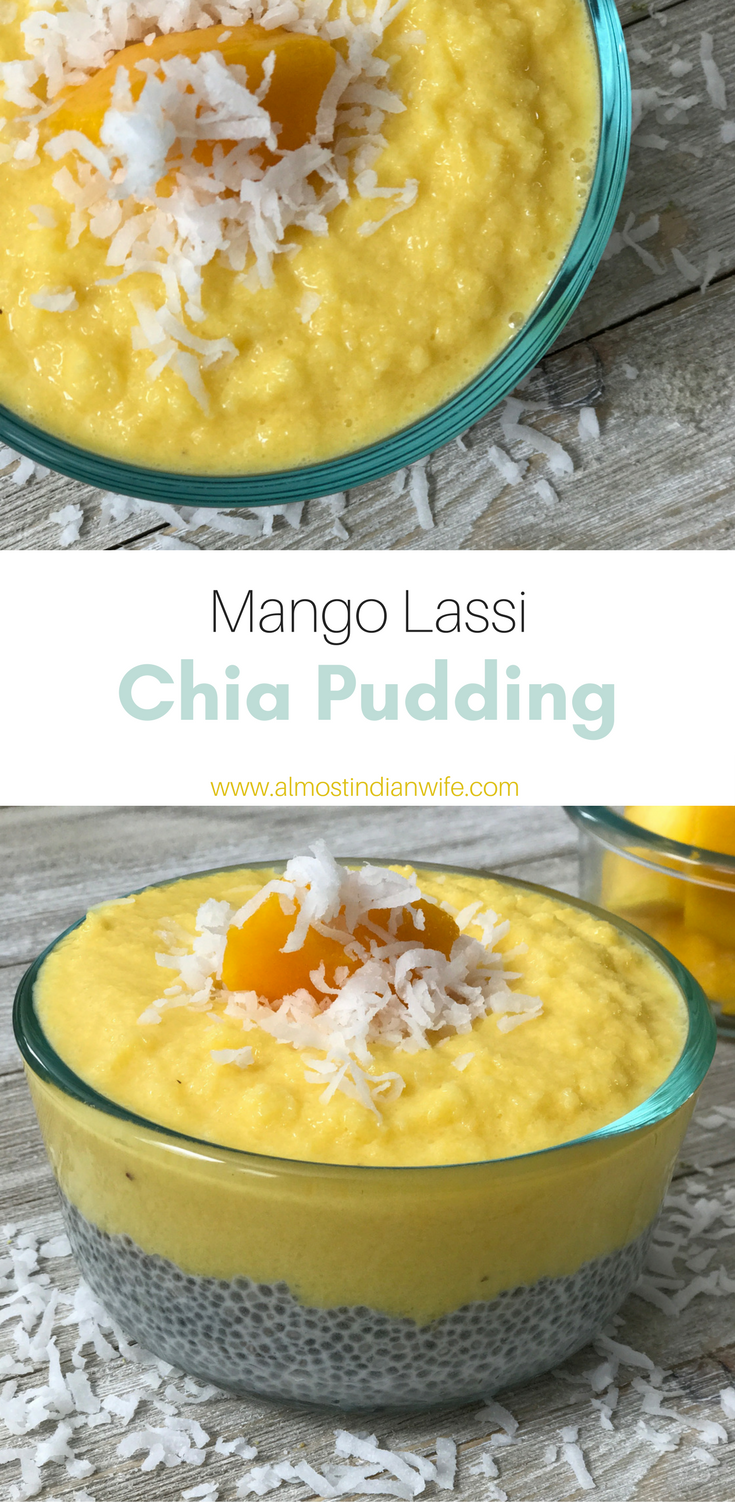
Food Is About More Than Just A Meal
I love seeing how many of my children's memories are associated with food. Food isn't just something to eat for them. It brings them back to the moment they first tried it, the people they were with, the feelings they had at the time, and it's all tied in to each bite.Mango Lassi is definitely one of those sweets for them. Every time we make it at home, they tell me how their Ammamma makes it for them every time they see her. Every sip brings them back to their visits to her house and the special moments they have had together.Food means so much more than I ever could have imagined in Indian families. It's more than food, it's all about the community around the meal. It's about the relationships forged over preparing and enjoying the dishes.I love that we're carrying this on with our boys. I think their bellies are happy too!
Magno Lassi Chia Seed Pudding
As the weather is starting to warm up in North Carolina, the boys and I decided it would be the perfect time to whip up a batch of Mango Lassis. While the boys enjoyed the traditional recipe, I decided to put a little spin on mine.My husband and I have been trying to eat better the last two weeks and incorporating more healthy options into our diet. Chia seeds have been a huge one for us. It has so many health benefits! Their rich with Omega-3, fiber, antioxidant and are great for your metabolism!We've been adding them into our smoothies, granola, cookies, and today we're even making chia pudding!When I told my husband what I was making, he got a little nervous. I could see it in his face.What are you trying to get me to eat now?All it took was one bite and he was hooked. It's so delicious and the added flavors of the mango lassi with it are amazing. [amd-yrecipe-recipe:19]
[amd-yrecipe-recipe:19]
Interracial Couples: The Feeling Of Never Doing It Well Enough
 There are so many blessings in being an interracial couple. You get to present your children with multiple rich cultures, you get to dive into a new culture, you get to see how differently your spouse grew up, your family vacations are amazing because you get to visit places you both went as children, and your family becomes a strong unit because you're figuring out how to blend cultures together.However, along with all of the blessings, there are some difficulties as well. I've received so many emails and comments from all of you sharing a similar struggle...
There are so many blessings in being an interracial couple. You get to present your children with multiple rich cultures, you get to dive into a new culture, you get to see how differently your spouse grew up, your family vacations are amazing because you get to visit places you both went as children, and your family becomes a strong unit because you're figuring out how to blend cultures together.However, along with all of the blessings, there are some difficulties as well. I've received so many emails and comments from all of you sharing a similar struggle...
The Struggle Intercultural Couples Face
You feel torn between two cultures. You want to blend these two rich cultures in your family, but it comes with a lot of outside pressure. Your family wants you to keep the traditions you grew up with and his family wants you to embrace his culture. It sounds easy enough, right?Then the comments start to roll in as you and your spouse start blending cultures the way you think is best. The wonderful comments that make you feel like complete garbage."Why are you doing it that way? That's not how we raised you to do it.""Why don't you tell her how she should be doing that?""Why do you let your child eat so much American food? Don't you want her to be raised with Indian food?""Why do you feed him such spicy food? We never gave you spicy food."These are some of the comments many of you have told me you get. As parents, you're probably already used to the outside pressure. There's always something you're not doing well enough or doing too much of. You can't win in the world's eyes because everyone has the idea that their way is the right way. This is definitely the same in blending cultures.It's almost like you're too (white) to be (Indian) and too (Indian) to be (white)... Switch it up and fill in the words that fit for you, but it's a real struggle intercultural couples are facing on a day to day basis.If you're not careful you're going to give into the pressure and start listening. All it will lead to is you feeling like a failure. Feeling like you can't do anything right.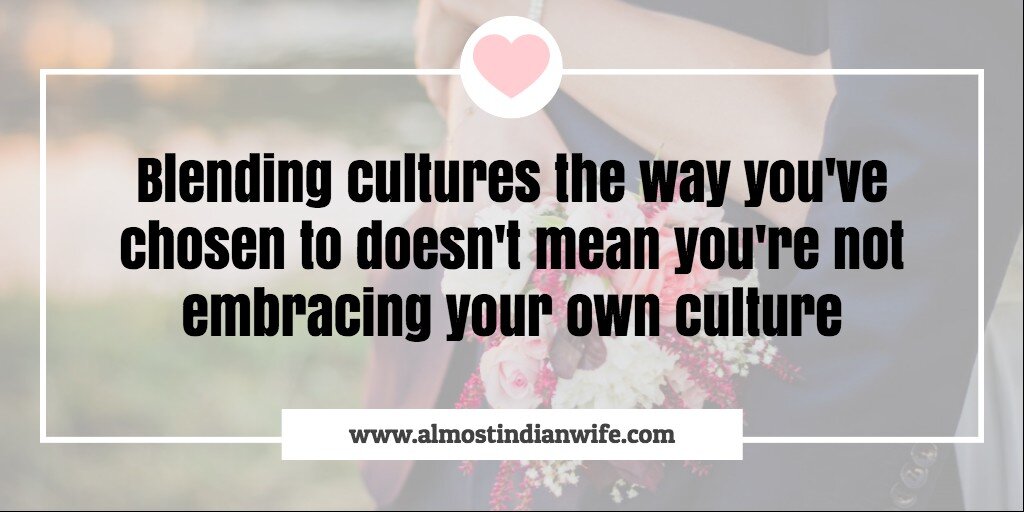 It means you're embracing both of your cultures and creating a new culture within your family.3 Ways To Respond To Negative Criticism Over The Way You've Chosen To Blend CulturesTake it with a grain of salt.When you hear a comment remember everyone has their own opinions. You may agree with some comments and completely disregard others. Before you ignore the comment, ask yourself if you agree. If not, that's ok! People always think their way is best and have a hard time changing what they think. Just remember it's your family and you will figure out the right way to blend cultures for you. Let it go and move on.Some comments you get will be frustrating, but easy to ignore. Others feel like a knife in the heart. It's hard to hear anything about your parenting or your family. You tend to get defensive and ready to fight off anyone that has anything negative to say about them. If they dare criticise either of them, you hold onto it. You let it fester and turn into something much worse.Instead, you have to let it go and move on. Their will always be someone out there with something negative to say. You can't hold onto it all because it will ruin you and it's not worth your time.Remember there is no perfect way to blend cultures.I have talked with so many people in intercultural marriages and my favorite thing is to see how they blend cultures in their family. I'm going to tell you a little secret... They all do it differently! They're all breaking the mold on what's right. Blending cultures is a beautiful and difficult task, but it's always worth it. Don't let the outside pressure get to you.
It means you're embracing both of your cultures and creating a new culture within your family.3 Ways To Respond To Negative Criticism Over The Way You've Chosen To Blend CulturesTake it with a grain of salt.When you hear a comment remember everyone has their own opinions. You may agree with some comments and completely disregard others. Before you ignore the comment, ask yourself if you agree. If not, that's ok! People always think their way is best and have a hard time changing what they think. Just remember it's your family and you will figure out the right way to blend cultures for you. Let it go and move on.Some comments you get will be frustrating, but easy to ignore. Others feel like a knife in the heart. It's hard to hear anything about your parenting or your family. You tend to get defensive and ready to fight off anyone that has anything negative to say about them. If they dare criticise either of them, you hold onto it. You let it fester and turn into something much worse.Instead, you have to let it go and move on. Their will always be someone out there with something negative to say. You can't hold onto it all because it will ruin you and it's not worth your time.Remember there is no perfect way to blend cultures.I have talked with so many people in intercultural marriages and my favorite thing is to see how they blend cultures in their family. I'm going to tell you a little secret... They all do it differently! They're all breaking the mold on what's right. Blending cultures is a beautiful and difficult task, but it's always worth it. Don't let the outside pressure get to you.
Multiracial Motherhood: How We Celebrate Multiple Cultures In Our Family
I'm very excited to be continuing our Multiracial Motherhood series this morning. So far we've walked along the journey with Sara and Larisha. They've shared a bit about their family with us and what they've learned in raising a multiracial family. Today, Becky from Kid World Citizen is joining us! There family has traveled the world to make sure their kids are raised with a global mindset and today she is teaching us a few of her secrets. 
Meet Momma Becky!
My husband and I met when he was an exchange student from Mexico spending a year at University of Illinois, while I was a student there. I had just returned from a semester in Spain and was matched up with a "buddy" exchange student who I was supposed to show around.From the moment I met Toño at our welcome picnic, we were instantly drawn to each other. Despite huge language barriers, we managed to talk for hours about everything under the sun. It was such a fun semester of studying, dancing, and running together.Thanks to long-distance phone calls, trips between the US and Mexico, and a lot of patience and love, we got married in the year 2000. Our 5 kids have joined out family in different ways. First, we had our 2 sweet biological daughters: the loves of our lives, who make us smile every day... but we knew our family was't complete. We adopted our oldest sun when he was almost 4, and his contagious, playful smiles instantly endeared us to our playful son. We decided to expand our family again when we adopted Ricky from Ethiopia. An inquisitive ball of energy, Ricky injected our family with a spirit of curiosity. Two girls, two boys, and we were a balanced, happy family--- but we still had this little voice telling us that we weren't complete.As we rode the roller coaster of becoming foster parents, we met our bundle of exuberant, intense joy: Mario. There is not a person who meets him who doesn't fall in love with this little ham.Having so many diverse cultures forming the foundation of our family has been incredibly enriching. We try to celebrate and honor our heritage cultures both in big ways (such as important holidays) and also little ways (through cuisine, home decor, books, etc).
We adopted our oldest sun when he was almost 4, and his contagious, playful smiles instantly endeared us to our playful son. We decided to expand our family again when we adopted Ricky from Ethiopia. An inquisitive ball of energy, Ricky injected our family with a spirit of curiosity. Two girls, two boys, and we were a balanced, happy family--- but we still had this little voice telling us that we weren't complete.As we rode the roller coaster of becoming foster parents, we met our bundle of exuberant, intense joy: Mario. There is not a person who meets him who doesn't fall in love with this little ham.Having so many diverse cultures forming the foundation of our family has been incredibly enriching. We try to celebrate and honor our heritage cultures both in big ways (such as important holidays) and also little ways (through cuisine, home decor, books, etc). We've learned that in the hustle and bustle of carpooling and swim team, homework and housework- sometimes the easier route would be to let time pass by without a mention of our backgrounds. But- and we are not perfect- we have to consciously try to always make our cultures an integral part of our daily lives by having friends from diverse backgrounds, choosing a neighborhood that reflects our family's cultures, and having open communication with our kids about race, ethnicity, and what it means to be growing up as "x" in the US.My advice to other multiracial families would be to embrace and learn about your loved ones' cultures as much as you can, so that you end up creating your own family culture that is a blend of customs and traditions from both sides.
We've learned that in the hustle and bustle of carpooling and swim team, homework and housework- sometimes the easier route would be to let time pass by without a mention of our backgrounds. But- and we are not perfect- we have to consciously try to always make our cultures an integral part of our daily lives by having friends from diverse backgrounds, choosing a neighborhood that reflects our family's cultures, and having open communication with our kids about race, ethnicity, and what it means to be growing up as "x" in the US.My advice to other multiracial families would be to embrace and learn about your loved ones' cultures as much as you can, so that you end up creating your own family culture that is a blend of customs and traditions from both sides. Finally, if at all possible, travel and immerse yourself to truly learn about your partner's background, language, and really the heart and soul of what makes them who they are. Our family has bonded so much by traveling together, while developing a pride in and love for each others' countries.It's this love and respect that builds us up and helps us support each other.
Finally, if at all possible, travel and immerse yourself to truly learn about your partner's background, language, and really the heart and soul of what makes them who they are. Our family has bonded so much by traveling together, while developing a pride in and love for each others' countries.It's this love and respect that builds us up and helps us support each other.
Follow Becky along on her journey here!
Our Multiracial Family Mentors
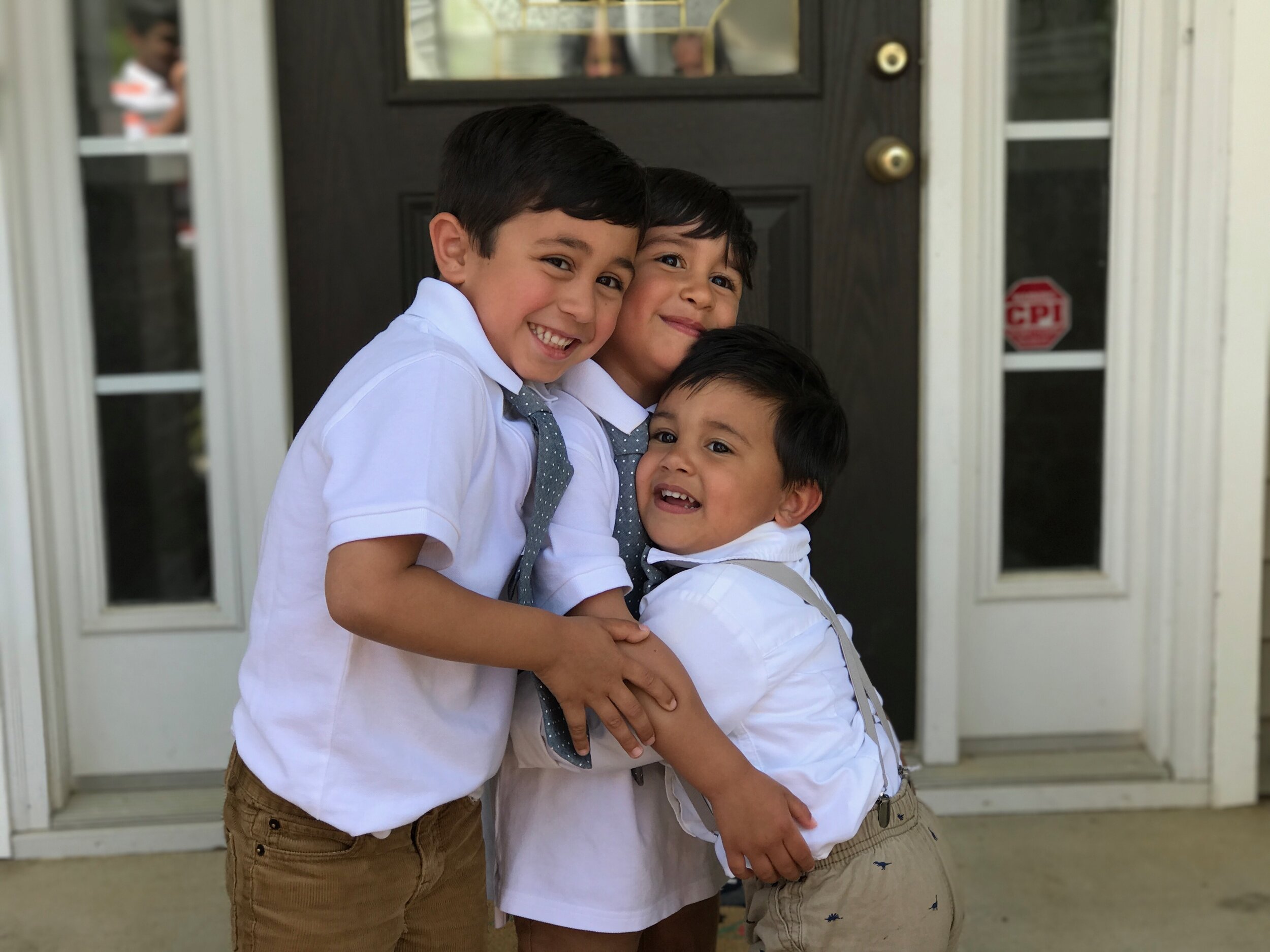
Holidays are full of chaos and sweet memories in our family.
What can you expect when you get so many people together in one home!Easter this year was no different. As most of you know, we recently moved to North Carolina which sadly is only further away from family. We absolutely love my husband's job change, as it means he hardly ever travels anymore, but being away from family is hard.Throughout our marriage, my husband and I have always lived by one side of our families. It's changed over the years as we've moved around, but family was always there.Now, the closest family member is about 8 hours from our home. We're no strangers to road trips, so I see plenty of road trips over the summer to spend time with the kid's uthas, chininas, uncles, and nanamas.In the meantime, we definitely miss everyone. This is why Easter was so special this year. My husband's pinni, uncle, cousins, and mom came to spend the holiday weekend at our new house!We were so excited to show everything off and show them the new town and home we've fallen in love with.Our home was bustling with people all weekend and it truly made our new house feel like our home. My husband and I love having family stay with us!One of the best parts of the weekend was seeing our kids spend time with their uthas and chinina (cousins).They are being raised in a multiracial family like my kids are and I'm always so encouraged watching them. Their parents have made such a strong effort to blend Eastern and Western culture within their family. They've always been our go to family for advice on how to blend. They've been doing it for 22 years!Sometimes I lay in bed at night wondering if I'm doing it well enough.I get worried I won't be able to bring Indian culture into our family as much as I want it to be.I worry my kids won't truly understand how rich and beautiful Indian culture is.Then I see their cousins and see that it's possible. They have a deep love for both cultures. It may be shown differently, but it's there. As they get older, their pride for both cultures only gets stronger.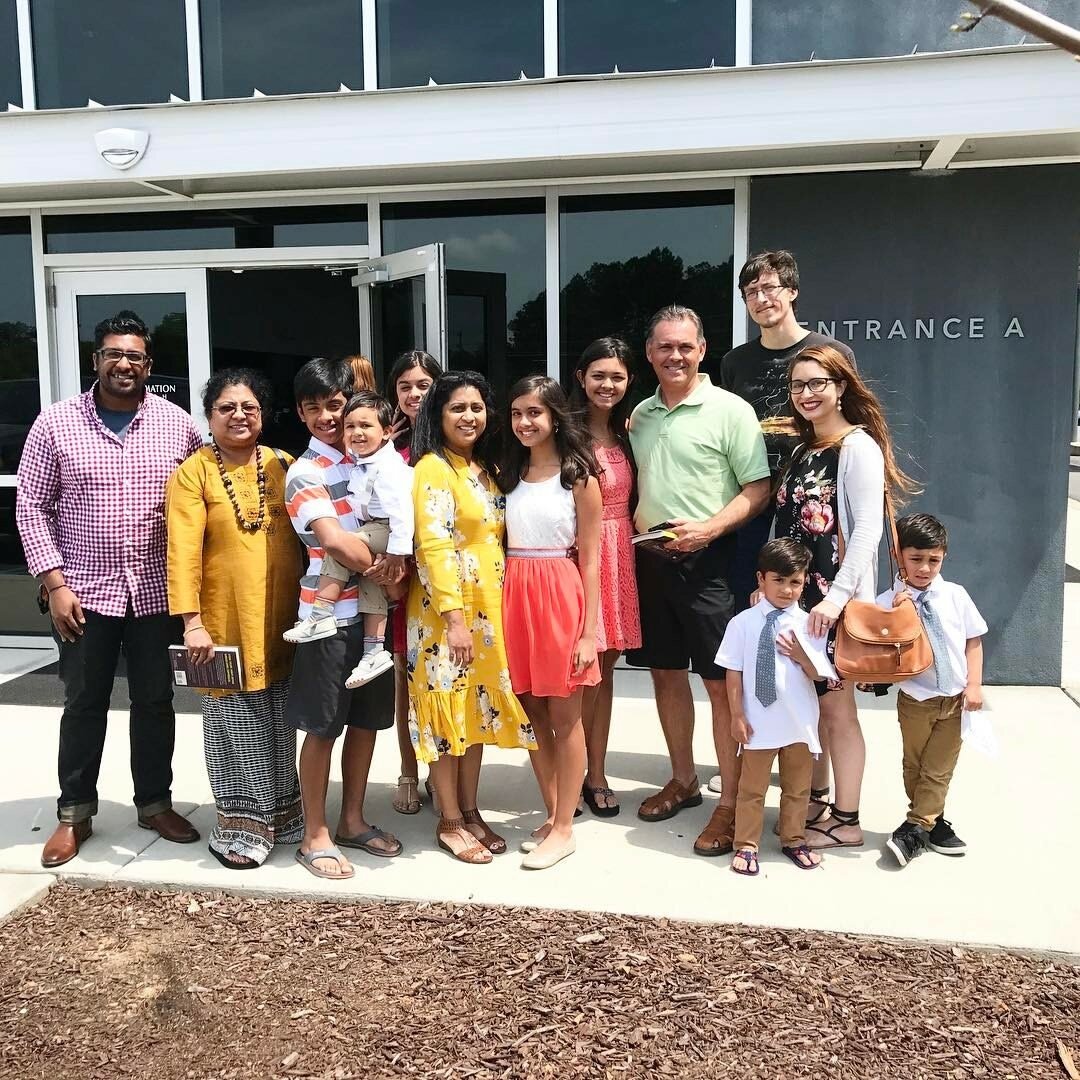 What are their secrets? What have they done throughout their kid's lives to make this a reality?
What are their secrets? What have they done throughout their kid's lives to make this a reality?
Travel
They have traveled to India as a family multiple times. It seems simple, but spending time in India takes what they've learned from their parents about Indian culture and takes it to the next level. There's only so much you can say and at a certain point you have to show them.Our family has yet to take our kids to India as my son is dealing with health issues, but we save every year so that we can make it a reality. We want to show our kids what it looked like for daddy to live in India.Traveling to India isn't just for the kids, it's for our marriage too. I want to see India and actually spend time there. I want to experience India with my husband.
Food
If you glance in their fridge or pantry, you'll see traditional dishes for both cultures and fusion dishes. You can look at the table and see one kid eating a samosa, one eating a mango, and one eating a peanut butter and jelly sandwich. Their kids are comfortable with both cuisines and I love it.We try and do the same with our kids. Our staple meals consist of keema curry, pasta, burgers, and chicken tikka masala. I do the best I can to make sure both cultures are represented throughout the week in my meal plan. Although if it was up to me it would be all Indian food because I'm obsessed!
Open Minds
This couple is completely open to their spouse's culture. While Pinni grew up in India, she has no problem embracing her husband's family culture. She wants him to know she values and loves his family, culture, and everything that has made him the person he is today.The same can be said about the way he treats her. He travels with her to India, he wears traditional Indian clothes, and makes sure his kids use the appropriate Indian terms for family members.The best part is that he has taught me so much about what it means to embrace Indian culture. He has been my go to person for advice so many times.Having an open mind in a multiracial family is vital. There are going to be so many times your culture will push you towards different directions. You and your partner have to be open to trying things a different way.
Do you have a multiracial family in your life that you look up to? What have they taught you?
3 Ways To Blend Cultures Without Losing Your Identity

"We don't need a melting pot in this country, folks. We need a salad bowl. In a salad bowl, you put in the different things. You want the vegetables- the lettuce, the cucumbers, the onions, the green peppers- to maintain their identity. You appreciate differences."
- Jane Elliot
Let's Throw Out The Melting Pot!
I love this quote. I've always heard of America as a melting pot of different cultures. As a child, I didn't think twice about it because it made sense. Now that I hear it as an adult, it doesn't sit well with me.A melting pot means we all melt together and conform to the same thing. If America is a melting pot, then we're expected to keep the parts of our cultures that everyone is comfortable with and let the other things go.It brings me back to a question I get asked by many of you.
Now that I'm in an interracial relationship, do I have to lose my culture and conform to theirs?
No. Simply no.When your partner fell for you it was because of who you are, not what someone wanted you to be. Your culture and life has helped you to become the person you are today.As we begin blending cultures, some people go back to the melting pot idea. They think you have to melt all of your culture, traditions, and life together with your partners until it becomes something brand new. In reality, one of my favorite things about a multiracial family is that you're bringing together two distinct cultures.Over the last seven years, my husband and I have found ways to bring in traditions we both grew up with, parenting styles we had, and new customs unique to our own little family.When we first got together, there was a part of me that assumed I was expected to let go of my own culture. Some of it was my own idea of what I was supposed to do and some of it was expectations from other people.It took me a while to realize I had to put the melting pot aside because it wasn't working for my relationship or family. My husband was actually the big reason for this. He had been telling me from the beginning I wasn't expected to do anything I didn't want to do. If other people wanted those things, it was up to me to decide what I was comfortable with.As many of you know, culture expectations can be a heavy burden, but at the end of the day it's our choice. We can choose to conform to different expectations or we can find a different way.Our identity is made up of more than just our traditions. Our identity is who we are at the end of the day. As you're sitting here reading this, think about what's made you who you are today.You are who you are because of the decisions you've made, how you grew up, the influences you've had in your life, your culture, and so much more. Our identity truly does change over time.The identity I had before kids compared to now is different and I don't see it as a bad thing. It's because the love you have for your children changes you.As you get into a relationship, your identity changes because you start to care about someone and make room in your life for them. As you blend cultures, the same thing will happen, but it doesn't mean you have to lose your identity. You will develop a passion for this new culture and you'll notice you want to bring it into your life and family.If we can throw away the melting pot, the fear of losing ourselves to this new culture goes away. Our little salad bowl will contain the best parts of both of our cultures.
What can you do to make sure your relationship is a blend of two cultures?
Communicate
I can't ever say this one enough. Communication is so important. You need to talk to each other and let your partner know how you feel. They can't read your mind and if you don't speak up, nothing will change.
Check in with each other
Sit down with each other and discuss your relationship. Obviously, this will probably happen throughout the week as well, but make sure you're intentional about it at least once a month.Then you create a safe time to discuss how you're feeling. Whether this is how their family treats your traditions, how you feel blending cultures is going in your relationship, etc.Things change. An area of your relationship can be going great one month and struggle the next. Make sure you are always reevaluating together.
Make a list
I know this one might sound silly, but it's not. Make a list of things that are important in both of your cultures. Then you can think about how to make those things present in your lives.We currently don't live by my husband's family. Our kids don't get to see all of the Indian customs and traditions on a daily basis. Knowing what my husband wants his kids to know and follow based on his culture helps us find ways to intentionally incorporate it into our daily lives.Blending cultures is beautiful because it's bringing two people together and finding the best of both.
How do you make sure your family is a good blend of you and your partner's cultures?
Can I Get An Interpreter Over Here?
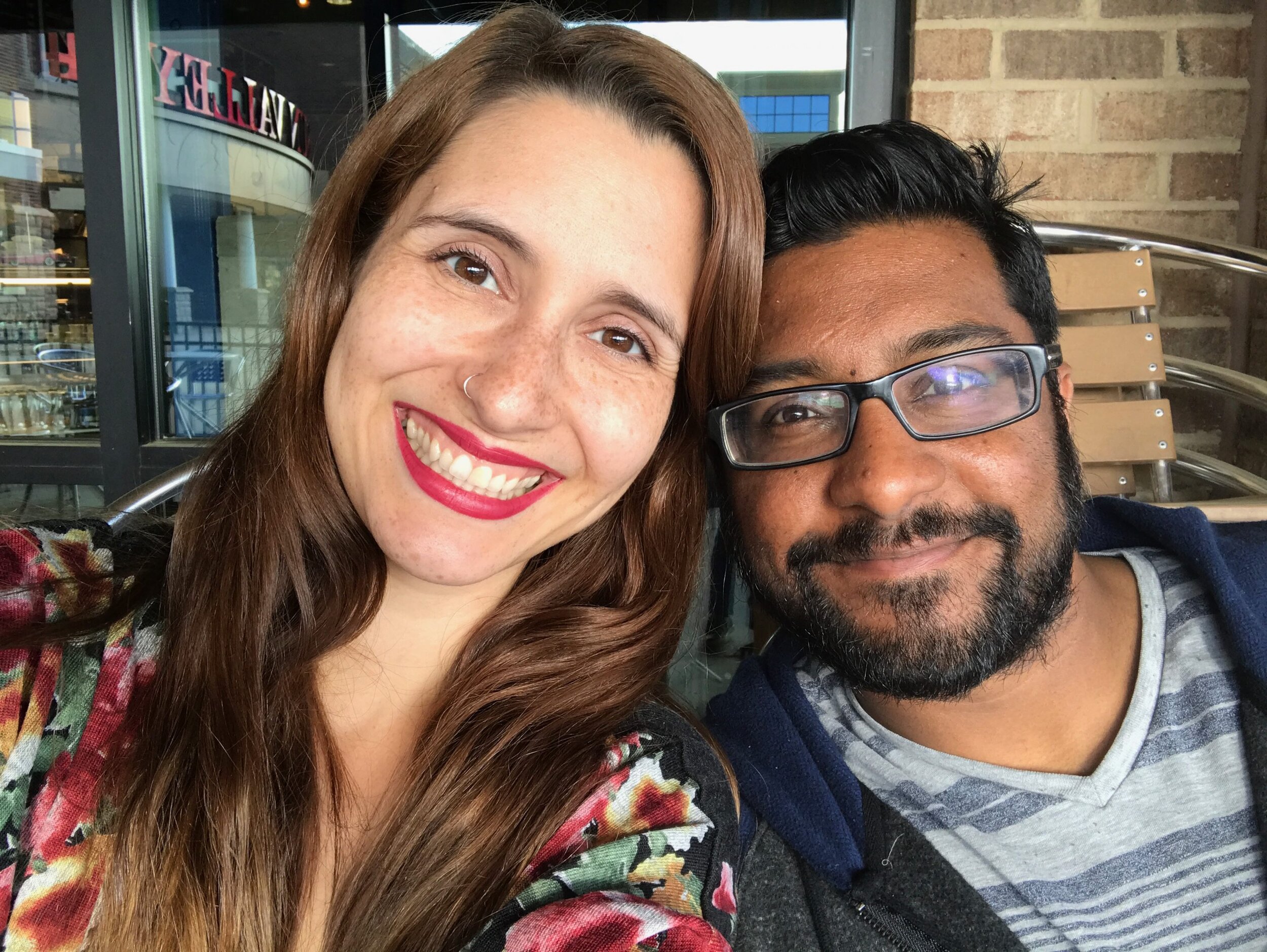 When my husband and I first met, we were doing an internship with our church. It was an amazing experience because we learned so much about ourselves during the program and of course met each other.The first time my husband saw me, I was interpreting for one of our morning classes. I had learned sign language the year before and helped out when I could by interpreting classes for my friends in the program.Learning sign language was amazing. It wasn't just the language I had learned that year, but I was introduced to deaf culture as well. I learned about deaf etiquette, how to interact with the deaf community, and how to blend cultures when the deaf and hearing community were together.
When my husband and I first met, we were doing an internship with our church. It was an amazing experience because we learned so much about ourselves during the program and of course met each other.The first time my husband saw me, I was interpreting for one of our morning classes. I had learned sign language the year before and helped out when I could by interpreting classes for my friends in the program.Learning sign language was amazing. It wasn't just the language I had learned that year, but I was introduced to deaf culture as well. I learned about deaf etiquette, how to interact with the deaf community, and how to blend cultures when the deaf and hearing community were together.
While I didn't know it at the time, I was preparing for a life of blending cultures for my multiracial family.
There were times throughout my internship where I would be sitting with my friends and signing for hours. If it was just my friend and I, hours would go by without me using my voice once. There wasn't any need to use my voice as long as I was mouthing the words. I was fully submerged into my conversation and didn't think twice about talking out loud.If someone that didn't understand sign would walk into the room, I immediately started voicing our conversation. I'll be honest, it took a lot of reminding because I assumed people around me understood. It became a routine that year for my deaf friends and I. I usually didn't mind, but there were times I just wished everyone knew the language. It took a lot of effort for my deaf friend who wanted to speak to everyone and I wished it could be easier for her.
Just about a year later, I was on the other side of the table.
My husband and I were getting married and we flew to Chicago. We decided to get married by his family so we could truly have a blended wedding and be able to incorporate both cultures.I'll never forget the first few times I would sit at a table without understanding a word that was spoken in front of me. My husband did his best to interpret, but he was just learning like I had the year before. It wasn't natural to him yet, so I often had to nudge his arm and ask what people were saying.I finally understood how frustrating it is to have people have a full conversation in front of you without being included. Honestly, it was painful. I felt like I was back in middle school, being left out from the group.
While I know now it's rarely intended that way, it's still uncomfortable.
You start making up conversations in your head, trying to guess what they're talking about. It makes it so much worse if you don't get along with your inlaws. Then you pick up on the few words you do know like "thella pilla" which means white girl.During my wedding, it was the first phrase I learned. I was joking with my husband and his cousins. I was laughing saying I bet everyone is talking about me and all of the things I'm doing wrong. They laughed and let me in on a little secret.Don't worry, you'll know when they're talking about you. They'll look straight at you and you'll hear "thella pilla."
A crash course into the Indian community!
I'm almost 8 years into my interracial marriage and I still encounter those uncomfortable moments. I don't know the language like I wish I did. I know bits and pieces so my imagination runs away before I can stop it.Most of those experiences have been because family is together and it feels comfortable for them to speak in Telugu. They grew up speaking it and I can only imagine it feels like home when they gather around the table telling jokes in Telugu. Those are the moments I ask my husband to interpret because I want to be a part of the group.Then there are the moments where people purposely speak another language in front of you so you don't understand. I still ask my husband to interpret, even if I can see the body language in the room is saying I probably don't want to know what's being said.
At the end of the day, if I truly want to be included in all of those conversations I have to learn the language.
I can't expect them to not speak Telugu in front of me, just like I wouldn't expect my deaf friends to stop signing.It's their language and no one can ask them to stop speaking it. I can, however, ask for my husband to be my built-in interpreter. sometimes it serves as a reminder for people to use English more so my husband doesn't have to. Or they start interpreting for me as well as teaching me what little words mean.
Have you ever been the only one at the table who doesn't know the language? What did you do?
12 Things You Understand If You're Mixed Race

1. You know your parents are angry when they yell at you in a different language
2. Friends felt awkward at your house
3. People assume you aren't related to your parents
4. Fusion food was normal in your house
5. Your family can't ever agree on how spicy food is
6. Only half of your family thinks they need sunblock
7. People will ask you questions all the time
People are constantly asking you questions about your ethnicity and family.
8. Filling out forms gets a little confusing
9. Explaining your name to people
10. Having to hear "it doesn't count you're only half"
11. Over people trying to guess your ethnicity
12. Not being fluent in the languages your family speaks
Which one can you relate to the most?
If you liked this, you'll LOVE this one!

Introducing A Babysitter To My Multiracial Family

Introducing A Babysitter To My Multiracial Family
Part of the reason our family clicked with her immediately was that we made sure she was comfortable with some of the unique qualities of our multiracial family. For the most part, our family is just like any other. However, there are a few customs and traditions that make us stand out.I wanted to make sure she was aware of them and also felt comfortable in our home. Here are a few things we did that you should too!
Make Sure Your Babysitter Is Aware Of Some Of The Language
While my children aren't fluent in Telugu, they do use many words throughout their conversations. It's important to let your new babysitter know a few words they're going to hear your kids say.This situation came up for us after our first experience with a babysitter. We left for the evening and found out afterward our four years old was frustrated. He had been trying to ask for milk all evening, but the babysitter couldn't understand what he was asking for. She would go to the fridge, Levi would ask for palu, and she would bring back juice.I didn't think about the fact that my kids used Telugu words throughout their conversations. Most of the things they say are milk, water, talking about a runny nose, and family member's names.From then on, we made sure to explain different words our kids use frequently. We also explain that family names sound different in Indian culture.This helps to prepare your babysitter as well as making sure there aren't going to be any language barriers while you're away.
Teach Your Babysitter About Your Family's Customs
If your babysitter doesn't know your family well, they aren't going to be aware of some of your family's customs. It's important to teach them about daily customs your family has. Most parents walk their new babysitters through their daily routine and as a multiracial family, you have to walk them through your customs as well.In our family, some of our customs are eating Indian food with our hands, referring to elders with their title (Mrs., Miss, Mr., etc), and our oldest child gets to correct our kids because he's their unna.Prepare your babysitter for the customs they're going to see and encourage them to try out a few if they're comfortable. My kids love teaching their babysitters how to eat Indian food with their hands and it becomes the sweetest bonding moment between them.
Invite Your Babysitter To Spend An Afternoon With Your Family
The best way for your babysitter to get to know your family is to invite them over for an afternoon. Go to the park together or even play in the backyard.This allows your babysitter to see your family in action and to make sure they get time to play with your kids while you're home. It makes it more comfortable for everyone all around.
Answer Any Questions They May Have
After an afternoon together, sit down with your new babysitter and ask them if they have any questions. Being introduced to a new culture can feel uncomfortable to some people. Most of that feeling is fueled by ignorance. They don't know enough about your culture to feel at ease.Make sure they know they can ask you anything. This breaks down any cultural barriers that may be there as well as making sure you're they are comfortable with your kids.
What do you do when introducing a babysitter to your multiracial family?
Sarla In The Sky: Kid Review Addition
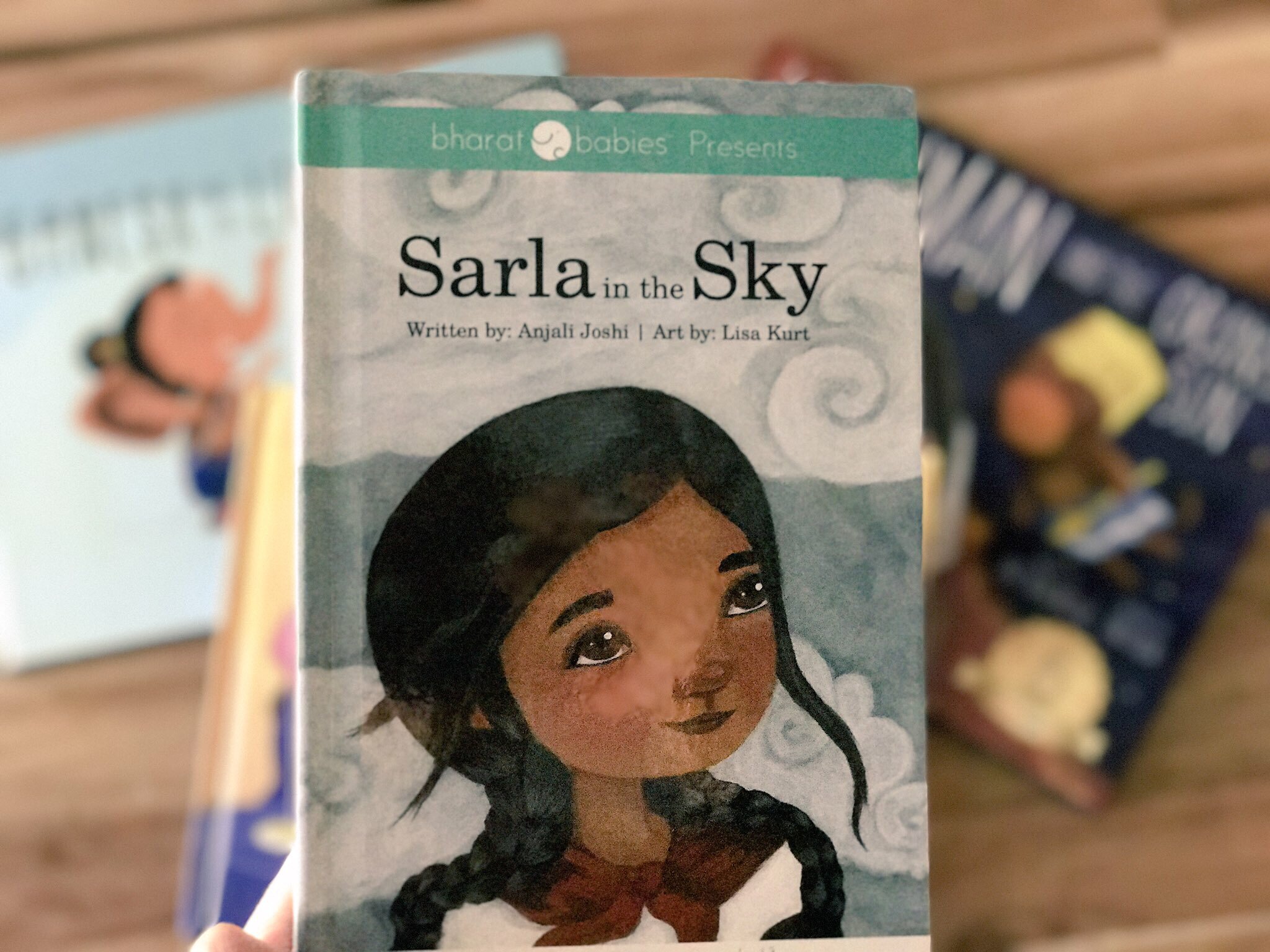
This post is sponsored by Bharat Babies. As always all opinions are my own.
The Best Part Of Women's History Month
Throughout the month of March, my kids and I have been diving into history. My boys have learned about so many influential women in history. They've learned about Helen Keller's determination, Sacagawea's adventures, Harriet Tubman's courage, and Mother Theresa's compassion.I love watching their little eyes light up as we dive into new adventures. This month has taught them so many things! They know that women can do anything they set their minds to and have even seen how courageous women have changed our world for the better.The best part is how it's inspired them!
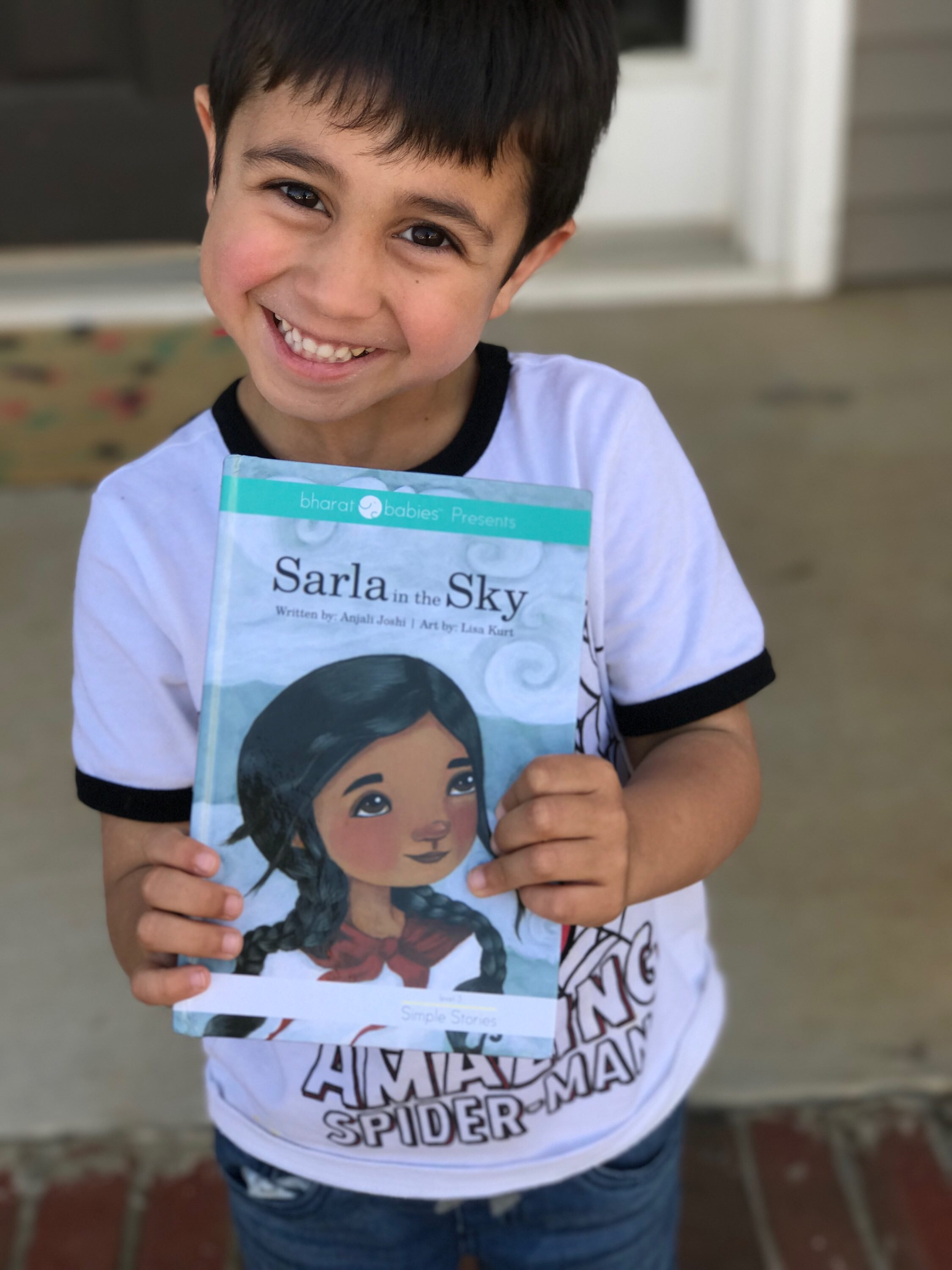
Let's Meet Sarla!
One of our favorite women in history is Sarla Thakral. She was the first Indian women to become a pilot! Her story is beautiful because despite all odds, she flew!Women have been told throughout history that they aren't as good as men. Social standards have told them that some things should be left for men. Sarla was a woman and living in India. Women are still struggling for equality in different parts of India so imagine how it must have been for her years ago!I was so excited when I found our new book, Sarla In The Sky. I've been obsessed with Bharat Babies' Books for a while now and I couldn't wait to get my hands on their new young reader book!My kids were just as excited! They eagerly checked the mail every day while we waited for it to arrive.
A 5 Year Old's Book Review!

Fun Facts About Sarla Thakral
After reading Sarla In The Sky, my kids wanted to learn more about her and her life. We had learned so much throughout our new book and were thirsty for more! Here are a few of our favorite facts!Sarla's plane was called the Gypsy MothShe had to log thousands of flight hours to get her pilot's licenseShe was born in 1914She was 21 when she got her pilot's licenseShe flew the Gypsy Moth in a sareeShe had a daughter
Learn about Sarla's story on your own and pick up a copy of Sarla In The Sky today!
Multiracial Motherhood: How Can You Bring Families Together?
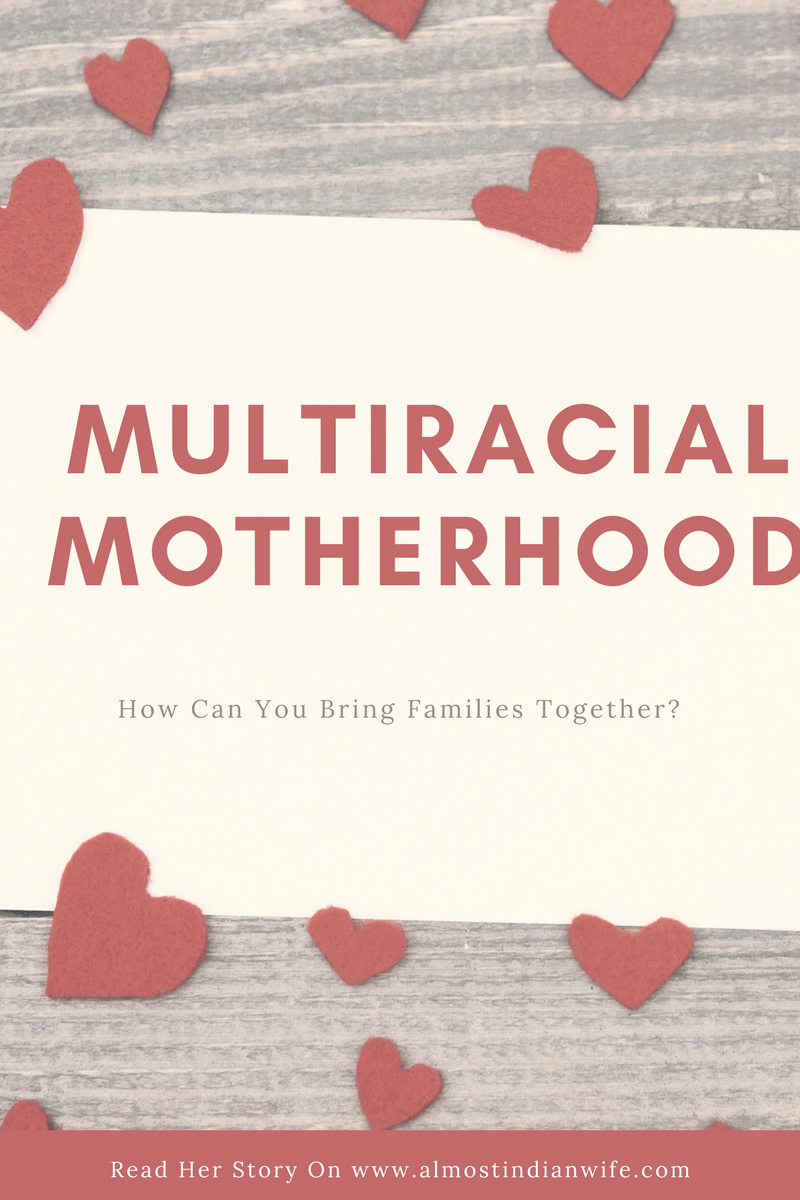
What Can We Learn From One Mother's Story?
Happy Friday!Fridays are my favorite for so many reasons. They mean my husband gets to be home all weekend with us, they mean family night, and they means another mother is joining us for Family Fridays!This series is so special to my heart because it’s a chance for mothers to come together and share their experiences with their own multiracial family. The beautiful thing is that all of our families are unique. They all have their own special qualities, unique challenges, and different experiences.Today, Larisha from We're Parents blog is joining us! She's going to share about her multiracial family and one thing she's found that can bring all families together!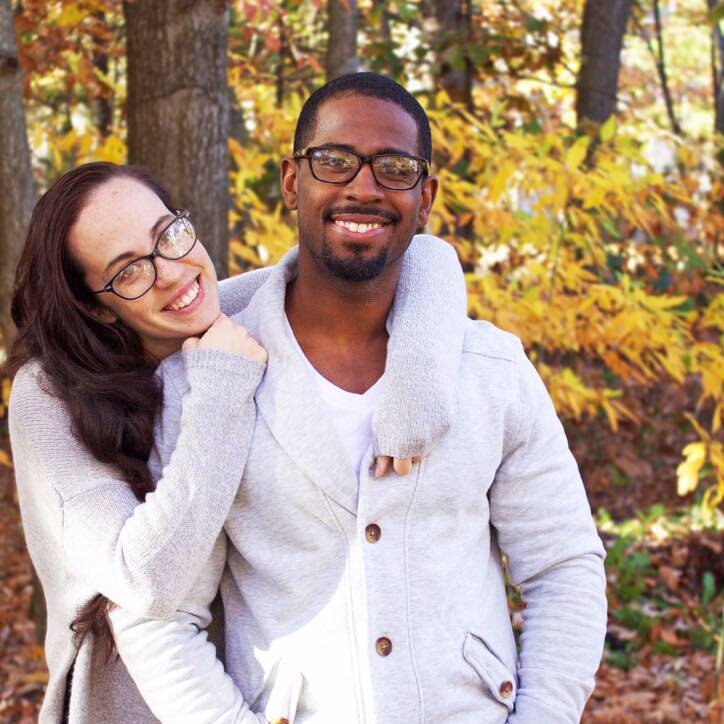
Let's Meet Larisha!
Hey y'all! I'm so excited to have the opportunity to share a bit about our family with The Almost Indian Wife crew, thanks to Brittany.Let's start with a bit of a background.I'm Larisha, a Caucasian American, born and raised in the hills of West Virginia. Andrew, my fiance, is a Jamaican American, born in Brooklyn, raised in New Jersey. Together we raise our two young daughters in New Jersey, just a short drive from where he grew up, while running our website, We're Parents, together.
Now let's rewind a bit.
Andrew and I met in 2005 during a History class freshman year at West Virginia University (Go 'Eers). The chemistry was always there, but I had a boyfriend and it wasn't until 2009 that we officially started dating. I was working on my Masters and he had just finished up his undergrad degree. He was moving back to New Jersey and we dated long distance for 3 months, then we decided that he would move in with me (WHOA, that was fast!). A few months later, we moved to New Jersey, and the rest is history (pun intended)It's been a whirlwind of an adventure and while we could tell you the stories of people asking if the girls are biologically mine, or the looks that we've received over the years while holding hands, you've probably heard all of that before or most likely experienced it yourselves.Today, I want to focus on how we've blended our cultures together SLOWLLLYYY. It was really important to me for his mom to like me. I knew she was hesitant about me. Andrew quickly informed me that if she wanted me to understand what she was saying, she would speak so I could understand. If she didn't, I wouldn't. His family speaks a strong dialect of Jamaican Patois, and while 90% of the time at this point in our relationship I can understand them, this advice still holds true to this day. Luckily, he did let me know earlier on that based on how she spoke to me, he knew she liked me.
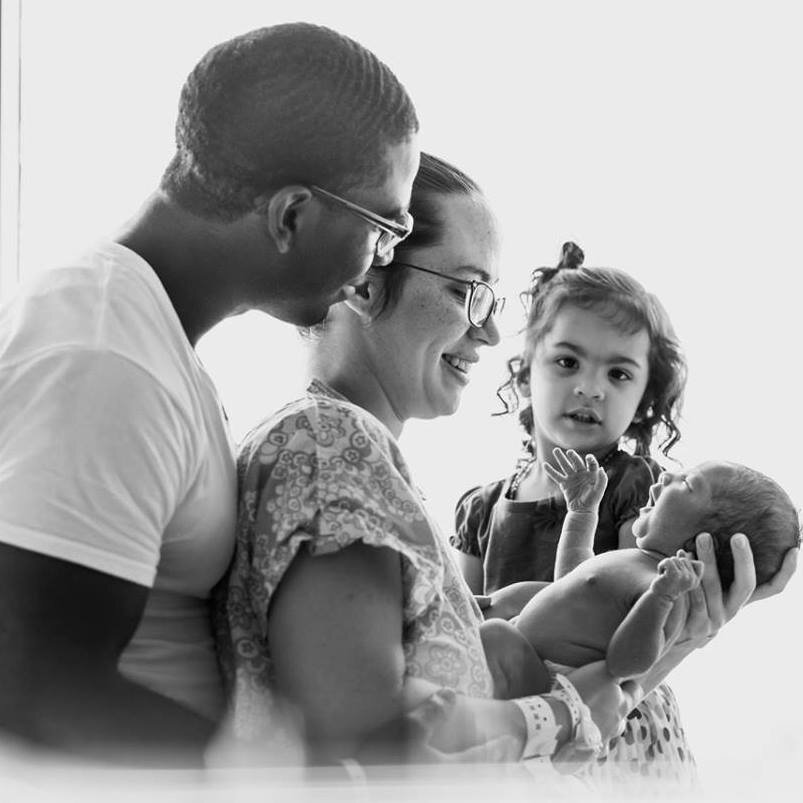
The key -Food. No seriously.
Alan D. Wolfelt once said,
Through everything, his family has taught me about joy, togetherness, and the amazing bond that a family can having, bridging two extremely different cultures, one meal at a time.
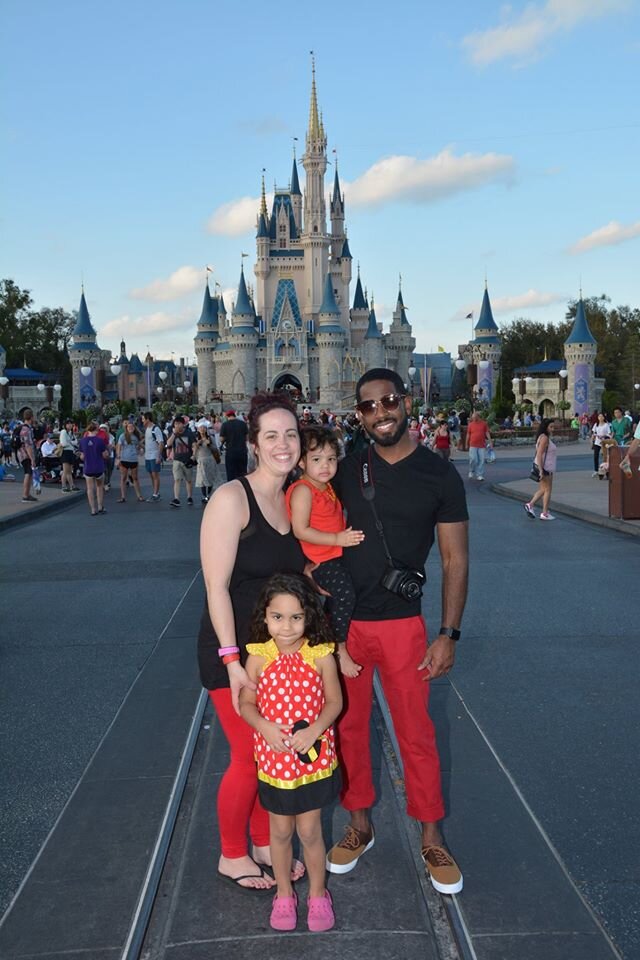
Stay updated with Larisha by following her here!
Multiracial Motherhood: Our Multiracial Family Through Adoption

What We Can Learn From One Mother's Story
Happy Friday! I thought we could kick off the weekend by starting up one of my favorite series again!Family Fridays!This series is so special to my heart because it's a chance for mothers to come together and share their experiences with their own multiracial family. The beautiful thing is that all of our families are unique. They all have their own special qualities, unique challenges, and different experiences.Today, my lovely and gorgeous friend Sara is sharing about her mixed race family. They have taught my family and I so much about diligence because Sara goes out of her way to make sure their lives reflect a true multiracial community. Check out more about her story below!
Let's Meet Sara
Hello, everyone! I'm Sara and I am excited to be here at The Almost Indian Wife to share a little bit about my family with you! Our situation is a bit different than the ones you may be used to reading about here, in that our family's multiracial "status" did not come about because of my husband or myself, but because of our children. And before I dive in, can I confess something? I don't always feel like we really are multicultural. Do we want to be? Yes! Are we working toward it? Yes! Do we still have lots more to learn? GOOD GRIEF, YES. And that's why I think connecting with other multi-cultural families is such a cool thing! Okay, back to the introductions...My husband, Phil, and I have been married for almost nine years now and we have two children. We lived in Ohio up until the spring of 2016 when we moved to Illinois. Phil and I were foster parents for four years in Ohio, during which we met and then adopted both our daughter and son. Russell (5 years) is African American and Claire (4.5 years) is Caucasian. Our children are not related biologically (yes, some people ask!) and have very different birth stories and foster care experiences. 
One thing my children do have in common though, (among plenty of other things, trust me) is that they have two parents who acknowledge and celebrate the things that make each of them unique.
Speaking of unique, let's talk culture. What exactly is culture anyway? Here's one definition: "The customary beliefs, social forms, material traits of a racial, religious, or social group;" also, "the characteristic features of every day existence shared by people in a place or time." Reading those definitions reinforces a couple things to me. One: The racial majority in our family is white American. That seemed so silly to even type but there it is. And let's be real, white American culture is not one we have to make an effort to call attention to. Ya know?
Two: If we want to be truly multi-cultural -- embracing, celebrating and participating in our son's racial culture -- we have to be intentional.
Neither my husband nor I are African American. And although our son is, he's been with us since he was two months old. Our white American culture is pretty much all he knows. So we have some work to do! What does this intentionality look like for us? Well, for starters, whenever I have the choice I choose African American. That might sound funny or off-putting but hear me out. It's not that we don't welcome and seek out other cultures. We absolutely do! But I'm here today talking specifically about my African American son and HIS culture and our desire for him to have racial mirrors in his life. If we want to raise a young man who embraces and is secure in his African American identity, he specifically needs African American people in his life. Okay, here's what I mean...Our community here in Illinois has a kids' sports program. So does the neighboring community. We're choosing to drive just a couple extra minutes to the neighboring community because it's more diverse. We figured there's a greater chance there for our son to have teammates and opponents and coaches who look like him than if he were playing on a sports team here. (Why didn't we choose to live there instead when we moved from Ohio, you ask? We wonder the same thing some times. Anyway...)When looking for a church to join, diversity was a priority for us. After Biblical teaching and gospel-centeredness, we looked for a place where our son could walk in and see people who looked like him. And not just in the pews, but on the stage speaking. In the classrooms teaching. In the small groups leading. When selecting books and toys for my kids, it's not difficult to find white baby dolls and white story characters and white action figures. In fact, if you're not purposely trying to avoid a whitewashed book and toy collection, you'll most likely end up with one. So when strolling through the store we see a giant Finn action figure (Star Wars main character who is African American- woo hoo!!), I snatch it up. A black baby doll for Claire? Yes, please. A picture book with black main characters instead of white ones? You get the idea. Now you might find this one silly, but I'm okay with that. When checking out at a store and I have the option (if it's not an insanely packed lane versus a totally empty one) I will choose a lane with a non-white cashier. 
We take our son to a black barber.
(A no-brainer.) This choice doesn't mean just one more racial mirror for my son. Every barber and almost every client there is African American. So, it means many. It means my son gets to be the majority. And my daughter and husband and I experience what it's like to be the minority. It means sitting and talking with people who share my son's culture. People who will tease me for never having seen "The Jeffersons" and who graciously and honestly answer my hair care questions. I'm telling you, walking into that shop where we are greeted by a packed room of 100% brown and black faces makes my heart swell with joy. Because the more we can immerse ourselves in African American culture, the more our family moves toward being truly multi-cultural. One more piece of advice. More important than all the little examples I shared above!
When seeking to embrace a culture that is not your own you have to first humbly acknowledge that you are not an expert.
And then start sharing your life with those who are! Become friends with people who are a part of your loved one's culture. Spend time with those who can help you understand the things you don't and who will lovingly correct you when you need it. I mean, read all the history you want; build the most diverse picture book library on planet earth; learn all the cultural traditions you can...but without real relationships with real people who know this culture, you will be missing out. And there you have it. We are a multi-racial family doing our best to recognize, embrace and encourage the unique identities of the precious children we've been entrusted with. We definitely don't have it all figured out but we're taking it one day at a time and learning as we go!
Follow Sara along on her journey and head over to her Instagram!
What Your Biracial Child Brings To School For Lunch Reveals More Than You Think
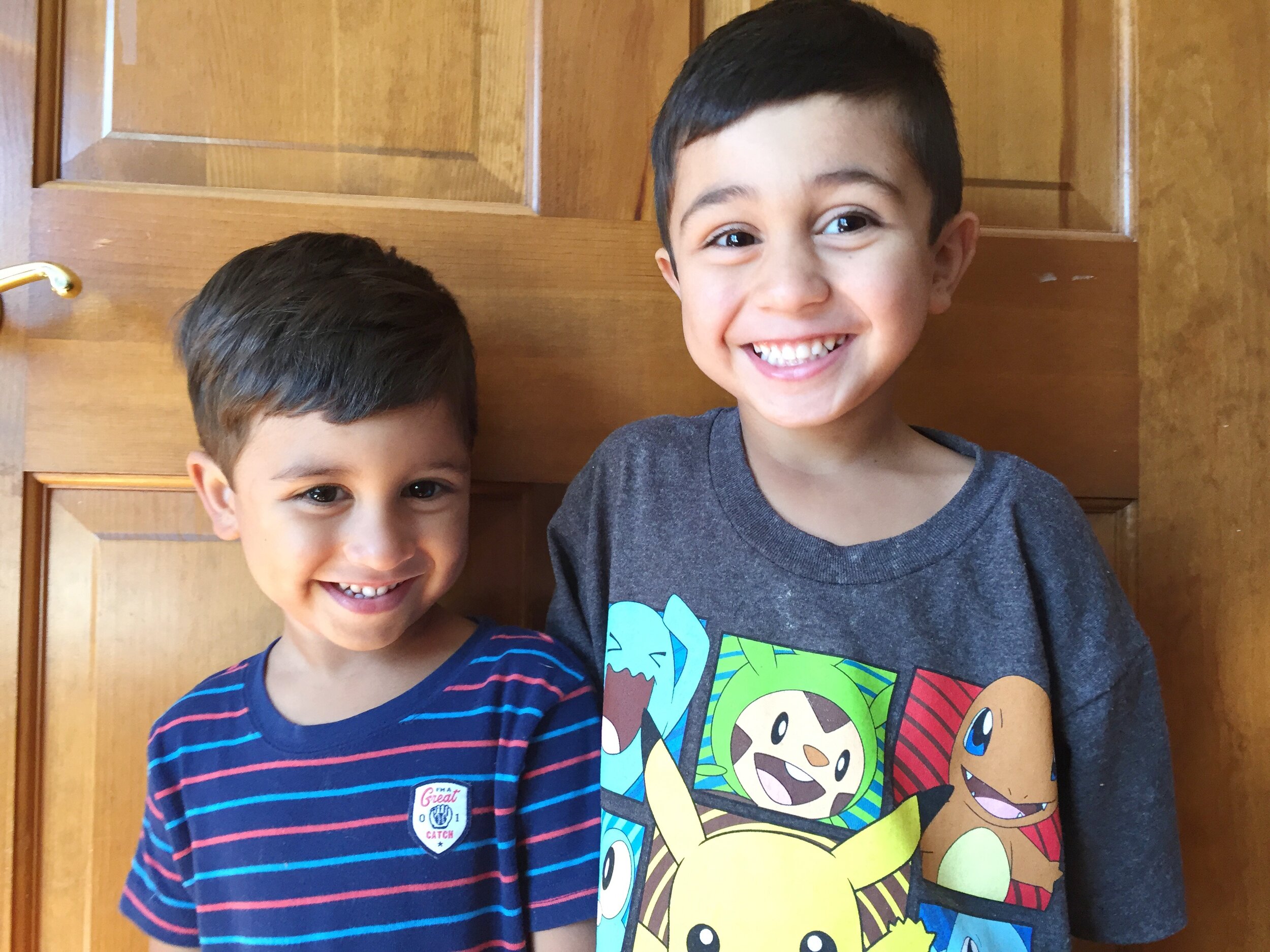
What Your Biracial Child Brings To School For Lunch Reveals More Than You Think
Over the last few years, my oldest son Liam has developed a huge love for leftovers. I don't know what it is, but every day around lunch time he asks what left overs we have. If by some chance we're out, he begs me to make leftovers...He doesn't just want a quick sandwich, he wants good food. He wants me to list out all the leftover options and gets excited to choose. I guess it's kind of like an international buffet at our house. We usually have pasta or Indian food like chicken curry. He's so obsessed with left overs that he started asking if he could bring left overs to school while we were visiting his cousins.Mom, will you send me left overs when I go to first grade next year?Now, his cousins are half Indian just like my kids are. They understand the multiracial dynamic because they're living it too! They're currently in elementary school and have plenty of thoughts on bringing left overs to school!
Their cousins are very comfortable in their biracial identity.
They've been to India, understand some Telugu, wear Indian clothes to events, and so on. They're also blessed with a momma that makes Indian food constantly and a daddy who makes comfort American food.I guess I assumed they'd want to bring their favorite dishes to school with them, but when I started asking them their answers surprised me.One of them told me they bring Indian food to school every single day. I wasn't surprised about this one because I've seen her devour a plate of tandoori chicken and I know how much she likes it.However, the other two said they won't bring Indian food to school and went on to tell me what their classmates have said about it in the past. Indian food has a distinct smell and their friends made fun of it. They hysterically laughed asking how they could eat that stuff.They only endured their friends bullying one time and decided then and there that they wouldn't bring Indian food to school anymore. Now, these kids love Indian food, but it wasn't worth being made fun of.
You guys, kids can be mean.
It broke my heart that they don't bring Indian food to school because of what people may say.I looked to their sibling and asked why she doesn't let her friend's bullying stop her from bringing Indian food to school. Her response was beautiful.I don't care what they say. At least I eat my favorite food every day.Boom! She hardly flinched when she said that and it's stuck with me since. I want my boys to have the same approach.As biracial kids, it's hard to be set apart. While most kids bring a PBJ to school, some kids bring traditional Indian left overs. There's nothing wrong with that! They bring what they would normally eat at home and it should be enough.It breaks my heart that kids bully each other over things they just don't understand. They look at an international dish and assume it's gross because they're not used to it.I hope and pray my kids won't let their friends determine what they bring to school for lunch.
I hope their pride and confidence in who they are helps them shrug off friend's comments.
This is why it's so important to me to have people over for Indian food and to eat with our hands. It shows our kids we won't grab a utensil just because our own friends may say something. Traditionally, you eat Indian food with your right hand in India and we do the same thing in out family.We also offer our kids and their friend's Indian treats during the day. Then we're right there if their friends say something and can gently encourage our kids to explain what it is and offer their friends some.Growing up a biracial child can bring about some unique challenges, but as a parent, I hope I can help them to build a strong identity that isn't rocked by what other people ignorantly say.
Have your kids every experienced this? If so what did you do?
If you like this, then check out this post!
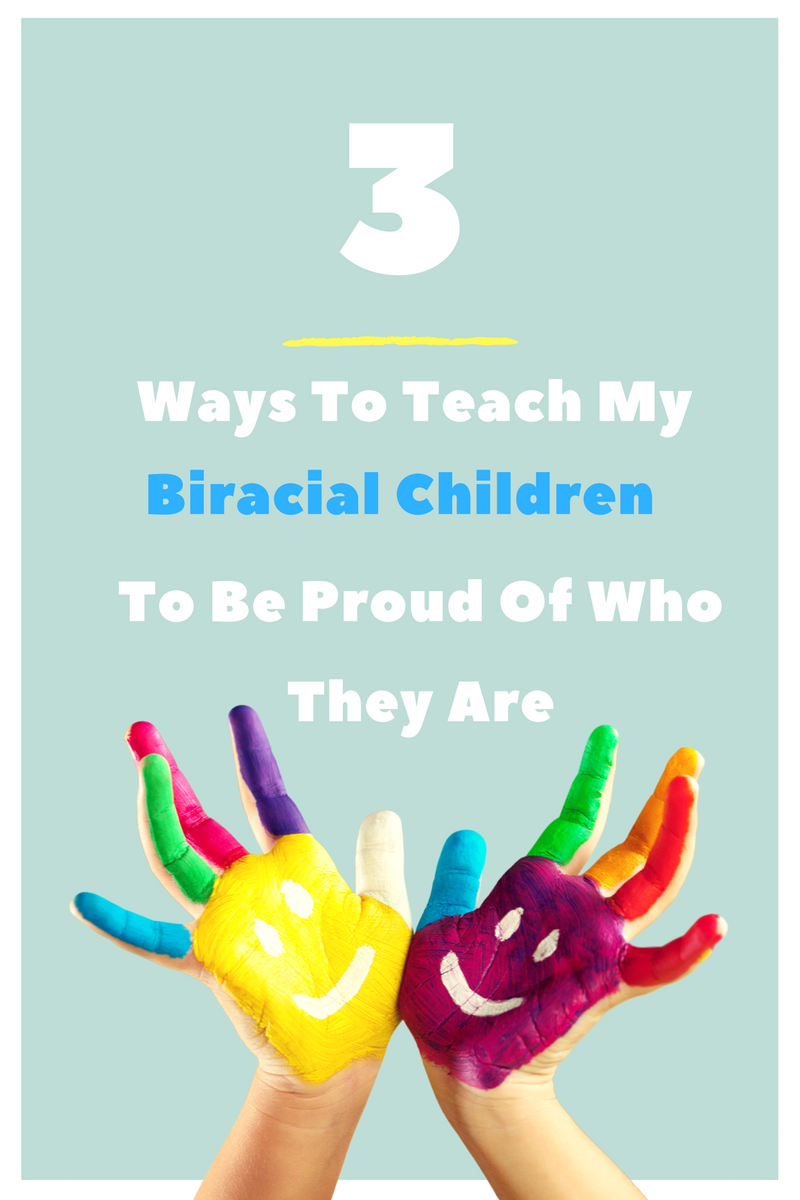
Celebrating Holi By Making It Colorful

This post is brought to you by Tea India. As always all opinions are my own.
How You Can Celebrate Holi
As spring is approaching, many Indian families around the world are getting excited. It means it's almost time for Holi, the Festival of Colors! This holiday has been making its way to the US as some colleges are even starting to celebrate it on their own!It's an opportunity for people to put down their differences and have some fun! During Holi week kids play pranks, colorful powder is thrown (or a color war if you're in our house!), and people are celebrating good over evil.As multicultural families, this holiday may look different to all of us. You may not know about the religious background to the holiday and that's ok. This is a great opportunity to teach your family about the world around them.As parents, we're raising global citizens. We have the opportunity to challenge hate and racism in the world by informing our kids. We can teach our kids about different holidays, customs, and ways of life. Holi is the perfect holiday to teach your kids about!It's all about love and celebration.

Colorful Activities
Another name for Holi is the Festival of Colors so as you can imagine, it's all about color! The time of year it's celebrated alone is all about flowers blooming and life starting fresh.There are so many ways you can teach your family about the Festival of Colors. Here are a few activities my kids love doing around this time of year.

Good Food
One of my family's traditions during Holi week is to prepare a delicious batch of Indian donuts. They're super fun and easy to make with the whole family! I swear my kids have a different sense just for Indian donuts because the second they smell them cooking they come running!
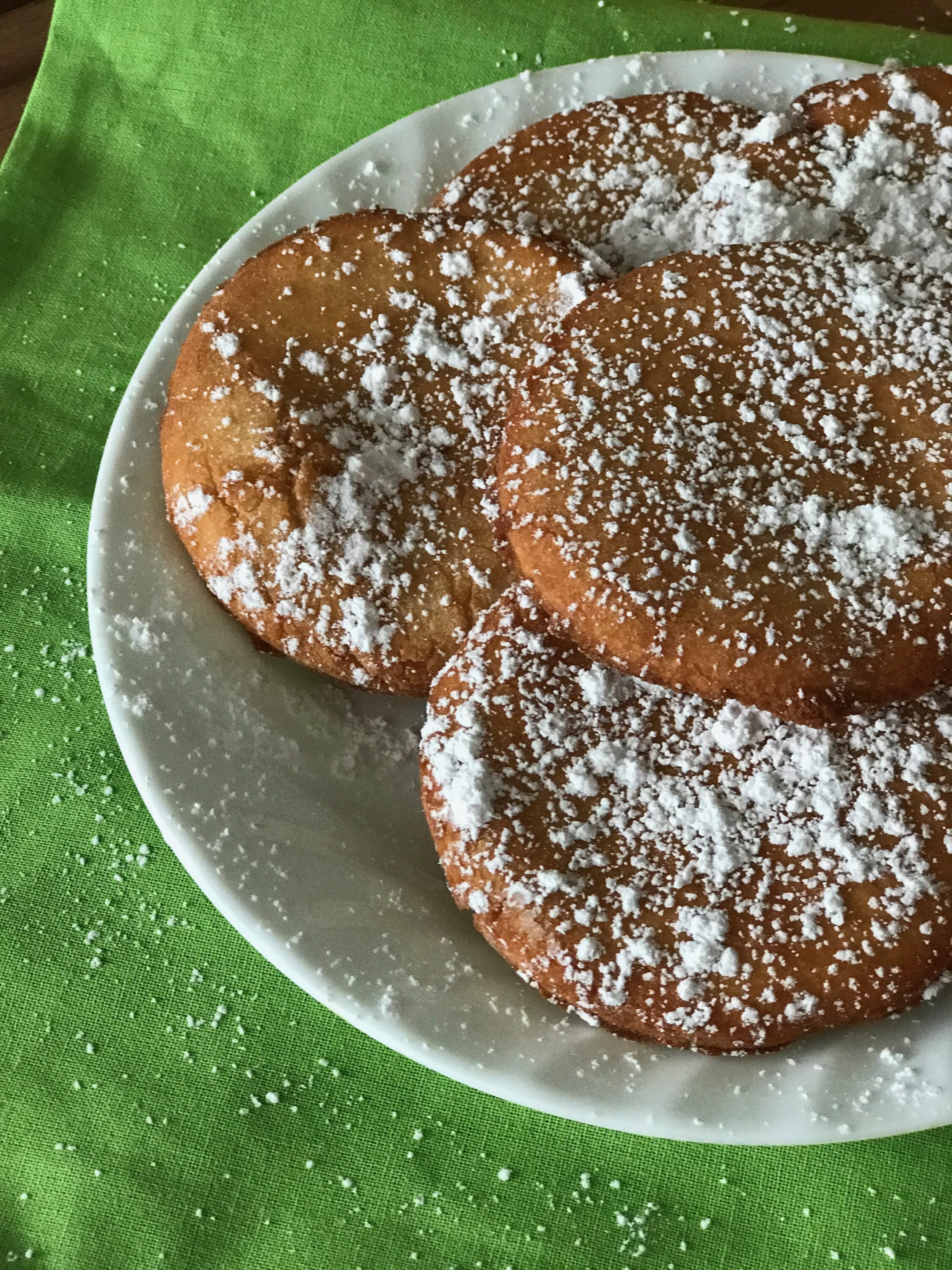
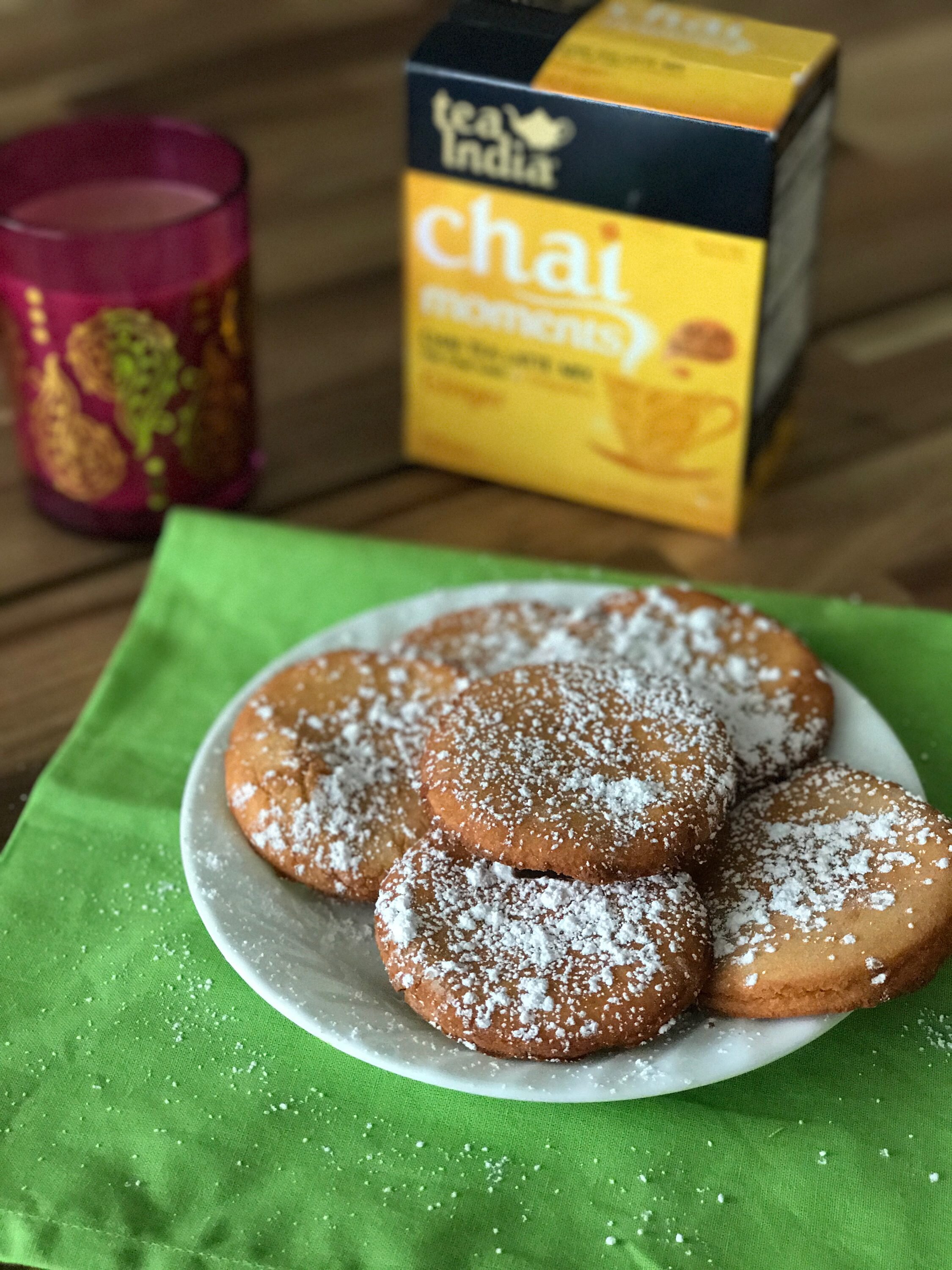
Celebrate Holi With Tea India
I've joined with Tea India today to see how we can help you #makeitcolorful! Whether this is your first time celebrating Holi or your family does every year, we want to see how you're celebrating!Be sure to share your traditions and don't forget to tag us!
Are you looking for a way to authentically experience Holi this year? Pick up Tea India's Chai moments! Their delicious, single serving drinks are the perfect way to experience Holi this year.I start most of my mornings off with a cup of their Chai Moments Milk Tea. They're so easy to make and even my husband loves how authentic every taste is!Learn more about Tea India's fresh and new products by following them today! You may even see us pop up on their feed!
How To Keep My Culture Alive While Living Abroad
 I'm very excited to join up with Lauren from English Wife Indian Life to share our stories. We're sharing how keep culture alive in our multicultural families. I share how we keep my husband's Indian culture alive in the US and she's sharing how she's keeping her English culture alive while living in India.
I'm very excited to join up with Lauren from English Wife Indian Life to share our stories. We're sharing how keep culture alive in our multicultural families. I share how we keep my husband's Indian culture alive in the US and she's sharing how she's keeping her English culture alive while living in India.
How To Keep My Culture Alive While Living Abroad
When I married an Indian, I remember thinking how lucky our children will be to belong to two extremely different cultures. As soon as I found out I was pregnant, I spent hours researching baby names that would fall easily from both tongues. Then I started to worry, my own cultural identity has been questioned numerous times, from “you should be more Indian now you live in India” to “it seems you are not proud to be British anymore”.Will my child have a similar experience? Will my child feel British at all growing up in India?India is the country I have called home for three years. Since leaving England to start a new life with the man I love, I have been learning about Indian values and traditions. In fact, I made it my mission to learn as much as I possibly could so I could understand my new family and the world around me. There are so many amazing things I want my son to learn and enjoy from Indian culture, but what about his other culture?I thought about the ways I have managed to maintain my culture in India, what parts are so important to me that I couldn’t leave them behind when I took off from Heathrow. I don’t want to force either culture down his throat, but I do want to give him the opportunity to experience both sides of his heritage.
Enjoying a Full English Breakfast
The food we eat says a lot about who we are, our lifestyle and our heritage. In a couple of weeks, I going to start weaning my son, which has put the emotional aspect of food in the spotlight. I can’t predict what his tastes will be, but I would hate for him to have the same problem I have.I’m so attached to English food that I daydream about it! It has a huge sway on my emotional wellbeing when I am unable to indulge in cheese or bread. Finding quality cheese and bread in the city I live has been a struggle. I want my son to enjoy a variety of cuisines, give him as much choice as I can. I would hate to be visiting England and have to make something separate for him because he has the same emotional attachment to Indian food as I do to English food.

Celebrating Christmas, Easter and Pancake Day
Every Christmas morning I woke up with a stocking on the end of my bed, stuffed with small presents from Father Christmas. If we were living in the West, we would be surrounded by Christmas, but living in India, it’s my job to cultivate the spirit.I don’t want to lie to my child about Father Christmas, for starters we don’t even have a chimney, but I don’t want to lose one of the very few family traditions I have (especially when my husband’s family have hundreds). I still remember how disenchanted I felt with the entire world when I found out Father Christmas wasn’t real. It broke my heart. I’ve thought about this extensively (probably too much) and found a solution.There is a ten day Hindu festival celebrating the elephant God, Lord Ganesh. The tradition is that families bring a clay idol of Lord Ganesh into their home, bringing his spirit into the house, and enjoy their time with him. I thought of Father Christmas, and he is the symbol for the spirit of Christmas (jolly, giving etc.). I’m sure my children will understand it this way, and avoid the minor breakdown I had when I was about seven.
Please and Thank You
When I first moved to India, everyone laughed at me for saying “thank you”. Hysterical laughter that made me feel uncomfortable and insecure. Still, I continued to say thank you, it’s not only a habit. It’s a compulsion. It’s not that Indians are rude, concept of politeness is vastly different in India. I would say by Indian standards, I can be (unintentionally) very rude sometimes. I want to encourage my son to say please and thank you, avoiding the disapproving looks when we visit England.
Making the Most of Trips to Britain
We may not have as many traditions and festivals as India, but our little island has beauty, history and fun things to do. It dawned on me as I was flying to India, my son’s childhood will be drastically different from my own . There are so many things I remember with great fondness, and I want him to have the opportunity to experience them too. Therefore, I have promised myself that when we do visit England, we will not waste a moment.

Bring my Culture to India for my Son
When I started to write this post, I thought about the ways I have brought British culture to India and it made my stomach turn. Britain ruled India for almost 100 years before India achieved freedom in 1947. After all the bloodshed, enslavement and stolen wealth, the British retreated after the independence movement, known for its nonviolent philosophy. The actions of some of my ancestors in India were awful and inhumane. I feel ashamed when I read about the brutalities and injustice.That being said, I believe that people cannot be blamed for the actions of their ancestors, religion, nationality or race. It’s also important we don’t wipe away history from our consciousness, to learn from mistakes and treat everyone equally, regardless of race, religion, gender or nationality.In the end, that is what I hope most for my son (and any future children we are blessed with), that they are kind, open minded and respect all living things.
Be sure to follow Lauren on English Wife Indian Life
Multicultural Corner: Raising Global Citizens
 My husband and I made the decision to homeschool our kids for so many different reasons. We both loved the idea of having flexibility to fit around my husband work schedule, the ability we would have to teach them the way they learned best, and the fact that we could choose their curriculum.Since we've started we've been able to do studies on butterflies, nature, and the ocean. I love seeing how excited my kids get when we start a new study. They want to soak everything in and they always have so many questions. My favorite part about homeschooling has been our discussions!We cozy up on the couch and talk about our study for the month. Often times it goes off on tangents where we daydream actually experiencing what we're learning about. Which of course leads to giggles and silly kids.I will always cherish these conversations with my kids. I do everything I can to teach my children that I'm there for them. I want them to know they can talk to me about anything. This is why there are no silly questions in our house. I'll be teaching the kids about butterflies and my three year old will ask me if he'll ever become a butterfly himself...I love it. I love their little questions.As a mother, it's my privilege to be able to teach them about the world and everything inside of it.[tweetthis display_mode="button_link"]As a mother it's my privilege to be able to teach them about the world and everything inside of it. #aiwtribe[/tweetthis]
My husband and I made the decision to homeschool our kids for so many different reasons. We both loved the idea of having flexibility to fit around my husband work schedule, the ability we would have to teach them the way they learned best, and the fact that we could choose their curriculum.Since we've started we've been able to do studies on butterflies, nature, and the ocean. I love seeing how excited my kids get when we start a new study. They want to soak everything in and they always have so many questions. My favorite part about homeschooling has been our discussions!We cozy up on the couch and talk about our study for the month. Often times it goes off on tangents where we daydream actually experiencing what we're learning about. Which of course leads to giggles and silly kids.I will always cherish these conversations with my kids. I do everything I can to teach my children that I'm there for them. I want them to know they can talk to me about anything. This is why there are no silly questions in our house. I'll be teaching the kids about butterflies and my three year old will ask me if he'll ever become a butterfly himself...I love it. I love their little questions.As a mother, it's my privilege to be able to teach them about the world and everything inside of it.[tweetthis display_mode="button_link"]As a mother it's my privilege to be able to teach them about the world and everything inside of it. #aiwtribe[/tweetthis]
Our Very Own Multicultural Corner
Last month, I sat down and tried to brainstorm different ideas on how I could get my kids excited about our diverse world. I want them not only to be raised as biracial children loving two cultures, but as global citizens who love the whole world.Then it came to me. Multicultural corner. Every month we're going to focus on a new multicultural resource. The goal of this is to get our kids excited about the world and to learn more about different cultures.Along with our multicultural resource we're going to do hands on activities, prepare delicious food, and share what we learn together.
Mixed Me
This book has been an amazing addition to our little library. It does a wonderful job of teaching kids the beauty in their biracial identity. There aren't many books out there that discuss multicultural families and Tay Diggs has taken his own experiences in teaching his son and has given us a great resource.Mixed Me walks us through the life of Mike. He is a little boy trying to figure out his biracial identity. Throughout the book he asks questions about his parents and himself. He wants to understand how he can be a blend of both of them when he looks so different.While my kids and I read this book I could see the excitement in their faces. My oldest son instantly felt a connection between the Mike and himself."Momma, he's like me!"
How You Can Join Multicultural Corner With Your Kids
Whether you're homeschooling your kids or you just want to create opportunities to encourage them to learn about the world around them, join us each month for multicultural corner! We will post new activities and ways for your family to join us!This month, we're starting off by talking about biracial identities. Pick up your own copy of Mixed Me from the library or get your own. We can't wait to hear the conversations it gets going with your family.
Get Featured!
Use the hashtag #AIWTribe when sharing your multicultural corner experiences and get featured!
Share Your Own Multicultural Corner Resources, Activities, and Recipes!
Leave one link and be sure to share it on Facebook, Twitter, or Pinterest!
Your Complete Guide To Diwali And A Few Must Haves

Diwali: The Festival Of Lights
Diwali is one of the biggest holidays celebrated in India. It's known as the Festival of Lights. This holiday is all about the victory of good over evil.There are five days of Diwali and in addition to different religious ceremonies, there are different things families do on each day.Day One: The first day of Diwali is spent cleaning your home and purchasing a lavish gold or silver item for your home. This is the prefect day to look through your home and purge anything you don't need. Think of it as your day of spring cleaning then you treat yourself with something nice.After your home is cleaned, you can decorate with rangolis! They are a beautiful design made in front of your home.Day Two: This is the day to exchange sweets with your friends and family. You used to have to stay home on this day and relax, but it's changed a bit over the years. You can also continue to make rangoli designs.Day Three: This is the day to light all of your diyas, lamps, and festive lights. Most families also attend their local churches and then go home and light fireworks to celebrate!Day Four: This is the day couples celebrate their love and give gifts to each other.Day Five: Day five is such a special day. Sisters invite their brothers to their home, make them a big meal, and pray for them.

Diwali Must Haves
Here are a few Diwali items you should be sure to pick up this year! My kids and I sat down and made a list of our favorites!
- Happy Diwali Cards
- Rangoli Stencils
- Sari Patchwork Throw Pillows
- Votive Candle Holders
- Lantern
- The Diwali Gift Book
- Diya Candle Holder
This post contains affiliate links which I do make a small commission on. I only recommend items my family truly loves and thinks you will too!
Teaching My Multicultural Kids What's "Normal"
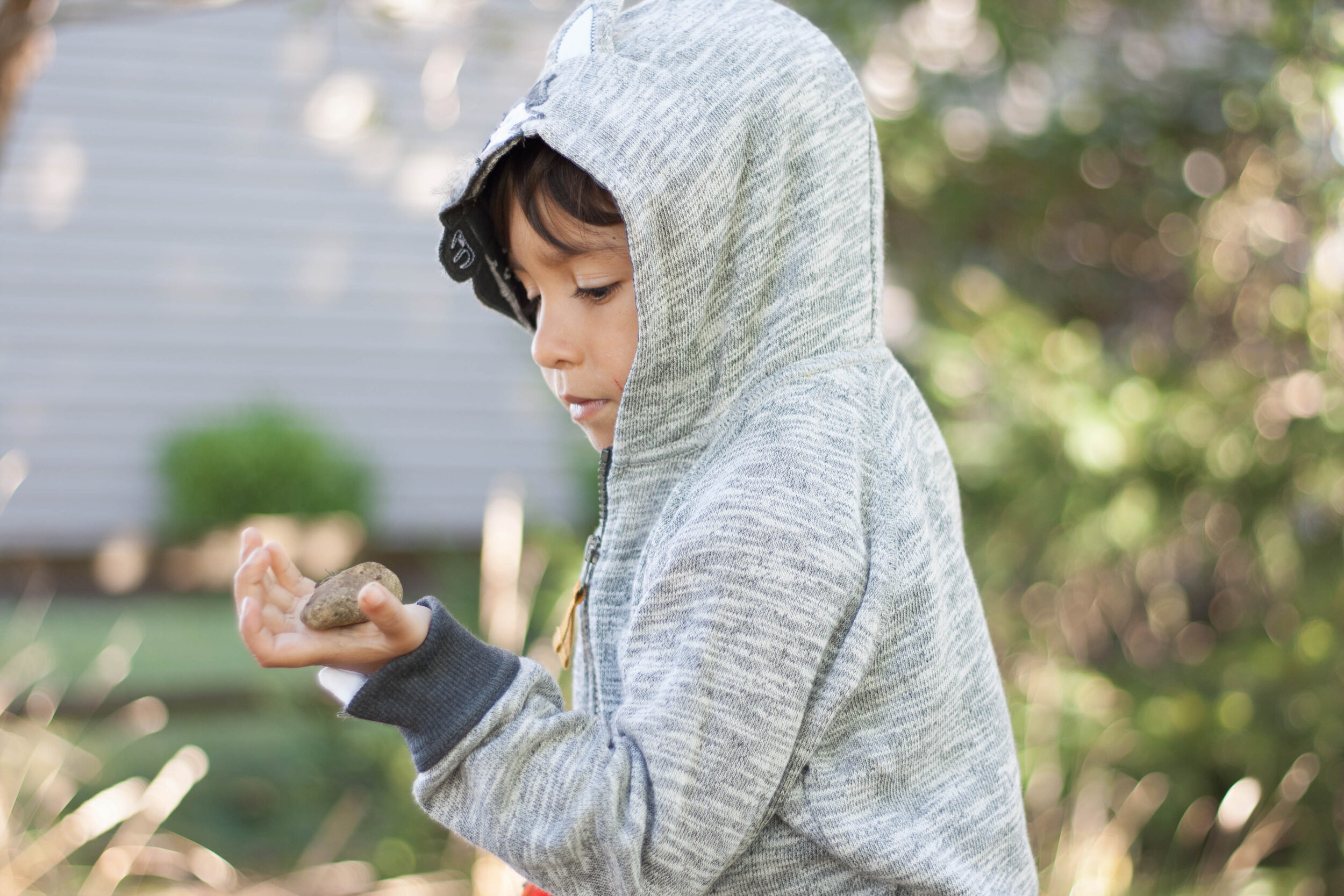
My Little Explorers
One of my favorites part of homeschool has been watching my kids explore. My little boys are curious about everything around them! If you look into their eyes, you can see they're always pondering something.Momma, why can't I marry you?Why can't we spend your grocery money on our toys? Aren't toys more important?Why doesn't everyone speak Telugu like daddy and me?I love hearing the questions their little minds come up with. While I may be assuming they're only thinking about the toy in their hand, they're actually processing life going on around them. They want to figure it all out.Sometimes, these questions are centered around what they want in the moment, like going toy shopping rather than grocery shopping. Other times, they're thinking about something much deeper. I'm always surprised to hear how deep their questions can become.Lately, my oldest son, Liam has been pondering the differences between him and those around him. As a biracial child, he's not new to the idea of being different than some of his friends, but he's starting to identify how they're different.
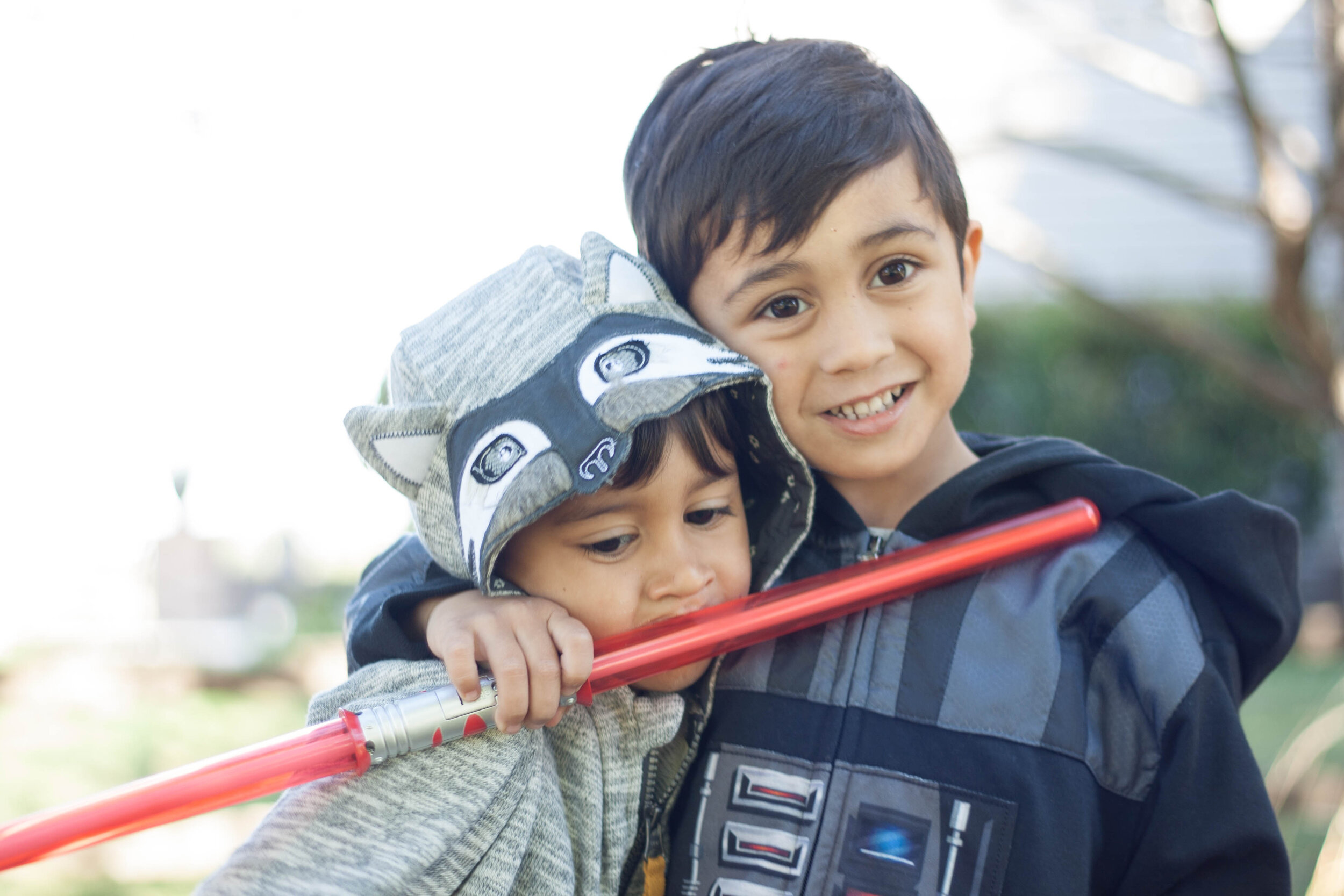 I Speak Normal
I Speak Normal
This week, we went to the store to pick up a few supplies. While we there, Liam overheard a few employees speaking in Spanish. He's fascinated with other languages because this is the first year he's had a personal desire to pick up more Telugu.He immediately started talking to me and asked if they were speaking Spanish. I said yes and he started to go off in his own version to show off for them, throwing in a few real Spanish words.He was so proud of himself. Then I became the mom that reminded him most of what he said was made up. Luckily, he just laughed and he started listing off all the Telugu words he knows.I love that he wants to explore languages, but I don't ever want him to come off as mocking someone else. I want him to know the difference between a made up language and a real language. Then he brought up one of his cousins who grew up in India.Momma, why doesn't he speak normal like me?Hun, there's not really a normal language. People across the world grow up speaking different languages and he grew up speaking Telugu. It's normal to him. Mom... Listen to me. See.. I'm speaking normal. It took some time to explain to him that normal is relative, but it got me thinking. I don't want to raise kids that think they're way is the only "normal" way. Right now, he's young and he's trying to process the world around him. I love that he's able to talk to me about everything he sees and wants to know more about.
Diversity Is Normal
I want my kids to grow up knowing diversity is what's normal. I want them to be able to look around and see the beauty in the differences between cultures.The more I can talk to my kids about the differences they see, the more normal it becomes. "Normal" is relative. It changes for everyone. However, one thing that should always be normal is a love for different cultures around the world.As my kids continue to question and figure out the world, I'm going to be right next to them. I want to help them as they figure it out.It's our role as parents to teach our kids the beauty of diversity. How can you do that? You do it by pointing out racial inequality, talking to your kids about what's going on the world, encouraging them to ask questions, and teaching them that all lives matter.Sometimes, I look at the news and for a moment, I wish I could hide it all from my kids. I don't want them to see how terrible people can be. I don't want them to know that some people are so hateful that they see their race as better than another.It's my job as their parent to talk to them about the hard things. I'd rather be the one to tell them, so I can also be the one to remind them all lives are important and diversity is what makes our world so beautiful.
How To Prepare For A Multicultural Family
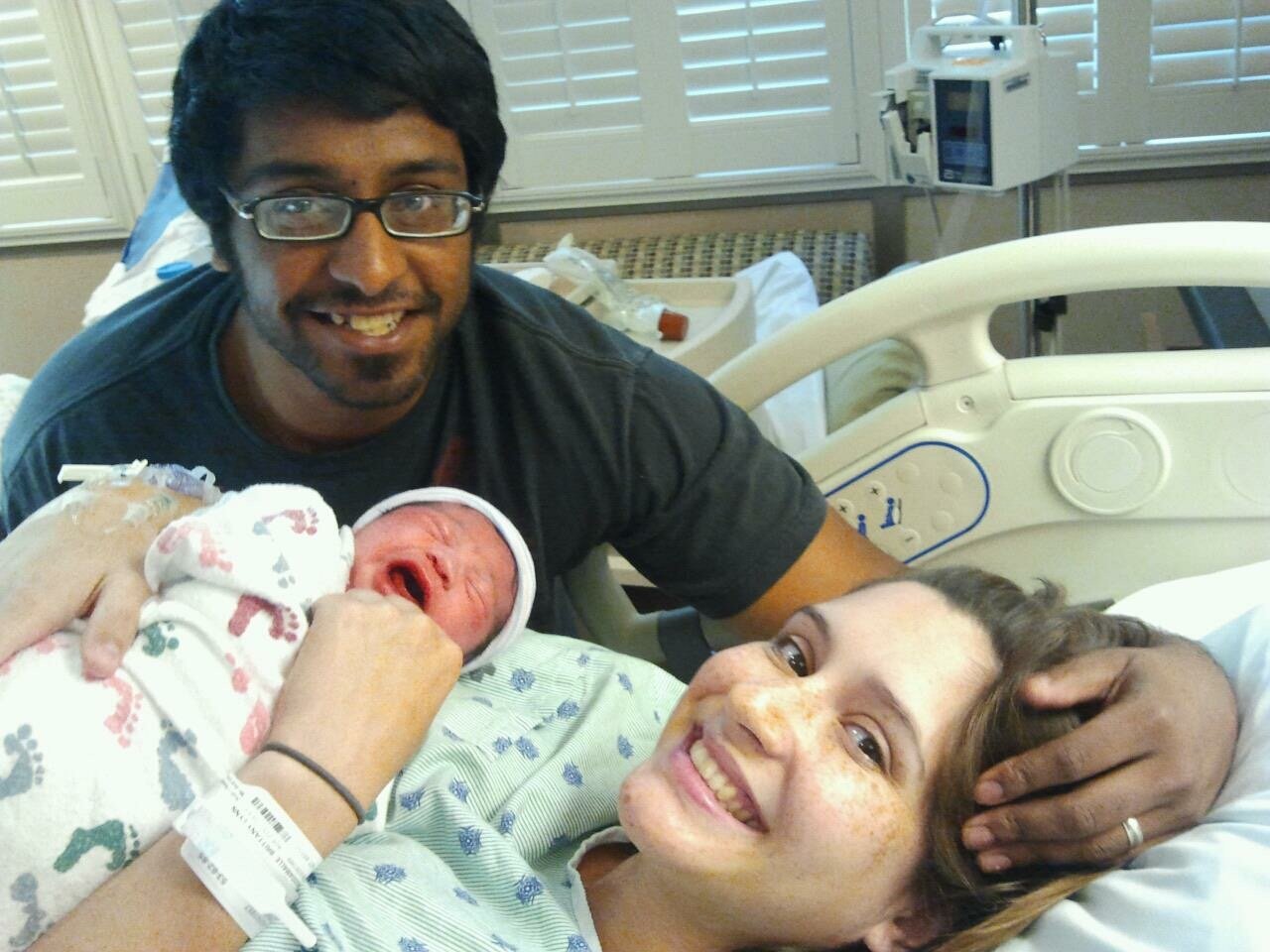
How To Prepare For A Multicultural Family
While I was pregnant, I found myself daydreaming over my little baby. I wondered what he would look like, what type of personality he would have, and how my life was going to change forever.
As a mother expecting a multiracial baby there were a few other things that came to my mind as well. I started to wonder how I would raise a biracial child.
How would I be able to blend cultures in their life?
Would I be able to show them the best from both of their cultures?
Would it be possible to teach them about Indian culture as I was just learning myself?
I had to remind myself I had time to figure it all out. My baby wouldn't come out expecting me to have their whole life planned out. All my baby wanted was my love, cuddles, and kisses right away.
When people ask me how they can prepare for their own multicultural family I talk to them about three things that have helped my family tremendously.
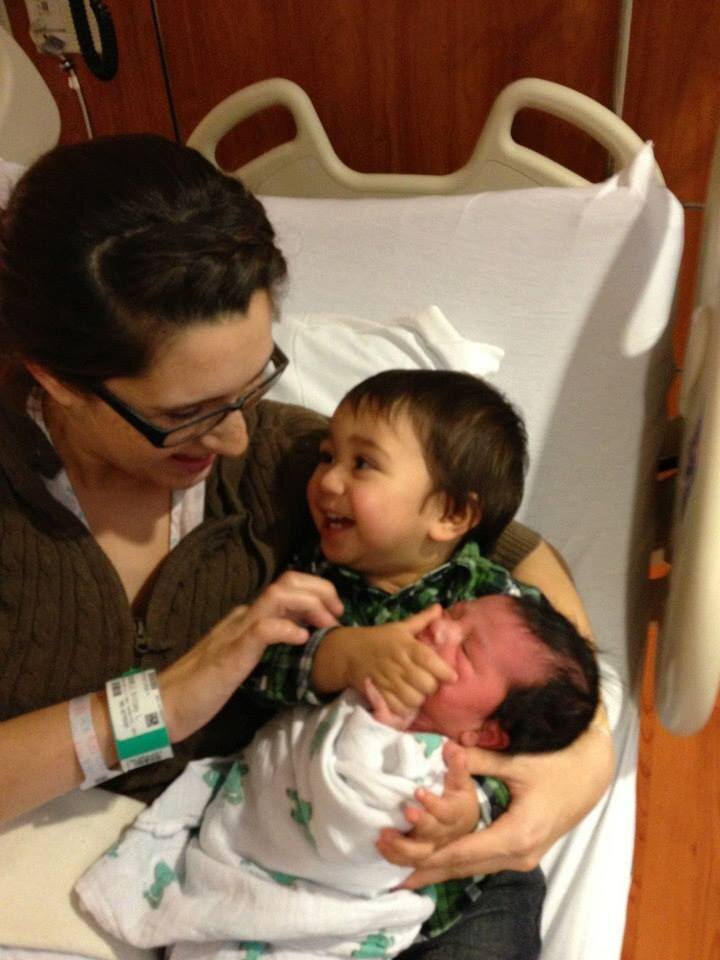
Start Building A Foundation Of Communication
As I welcomed my newborn into my life, I quickly realized how important communication was in our family. Raising a biracial child means you're going to have to talk about everything from racial identity to what they want to be when they grow up.It's important to think about how you can create open lines of communication from the beginning. Obviously, you have a few years before these communication skills will mean anything to your little one, but the more you work on it now the more natural it will be as they get older.Often times, we think we have all the time in the world and end up waiting. Even as a toddler, your children need to know they can come to you with anything.Start building this foundation in your relationship as parents and then it will be natural to continue it with your children. Your child will look to their parents to figure out what good communication looks like and whether or not it will be important to them.
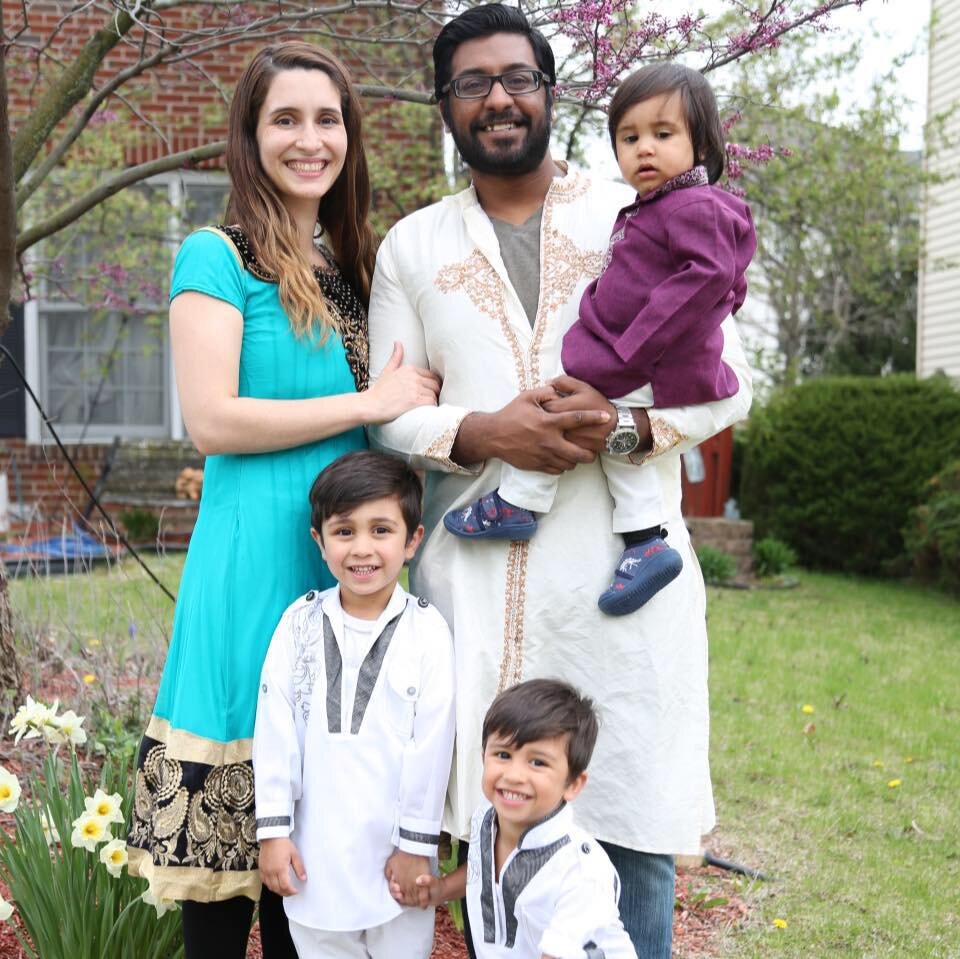
Establish A Family Identity
My husband and I started to develop a family identity as soon as we got together, but it changed when we had our baby.When you welcome a child into your family, your family identity starts to change again. Now, you and your partner aren't the only important things in your lives. Now, you have a beautiful little baby you have to consider in all decisions you make. It's important to think about your family identity early on.How will your family blend cultures?What values will your family pull from your culture?What traditions do you want to pass on to your child?As you think about these things, you will begin to develop a family identity. No two family identities look exactly the same and that's what's so beautiful about it. You have the freedom to make it what you want. As time goes on, you'll even notice things changing. Things that worked at the beginning may need to be different years from now.That's ok. Your family identity will change and mold into what you need at each season. The most important thing is to discuss your values, beliefs, culture, and traditions as time passes. Then you can hear what everyone needs in each season.

Bring Diversity Into Your Child's Life
As parents of a multiracial child, it's your job as a parent to teach them the beauty in diversity. Many children face a time in their life where they struggle over being different. They want to be like their friends and look like the people they love.It's your job to remind them diversity is beautiful. How can you do this? Show them how diverse the world is.While you're pregnant, be sure to think about diversity when you register for baby items. Look for books that show main characters of different ethnic backgrounds. Find baby dolls in an array of colors. As they grow up they should see diversity as the norm.It's important to be intentional in teaching your child about the world around them. The more they learn about the world around them, the more comfortable they'll be in their own identity.
Start Preparing Today
As you prepare for your multicultural family, think about how you can begin to think about all three of these things. They're going to help you as you prepare for your new baby and throughout their childhood.
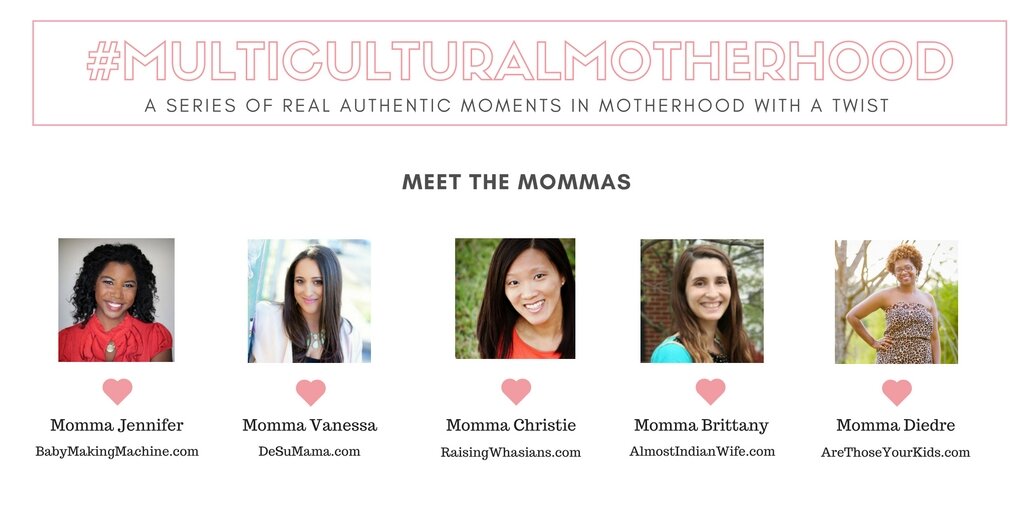
Today, I'm joining up with four beautiful mommas to talk about multicultural motherhood!
What to Expect When You’re Expecting Multiracial Babies/ De Su Mama
Will My Child Look Like Me? Thoughts from a Multicultural Mom /Raising Whasians
Books for the Multicultural Family / Are Those Your Kids
Raising Multiracial Babies: Expectations vs Reality / Baby Making Machine
Don't Miss The Next Multicultural Motherhood Link Up and Follow Me Today!
Back To School Tips For Multicultural Families

Back To School Tips For Multicultural Families
Homeschool
Gather Multicultural Resources
While collecting your supplies for the year, be sure to keep an eye out for multicultural resources. Homeschooling provides a great opportunity to focus your curriculum on what you want to teach your kids. Look around online and at local stores for multicultural pretend play items or books featuring characters from different countries.
Teach Your Children About The World
It's easy for families to center their curriculum around the cultures they're blending in their family. However, it's important to remind your kids they're global citizens. This means they should be learning about cultures around the world. Take them to different countries throughout every lesson throughout the year.
Attend Multicultural Events In Your Community
Most towns have a number of multicultural events throughout the year. Go online and find out which ones your town offers and put them on your family calendar. These events are a great way to not only learn about different cultures but experience them. Our town just through a huge celebration for India's Independence Day.
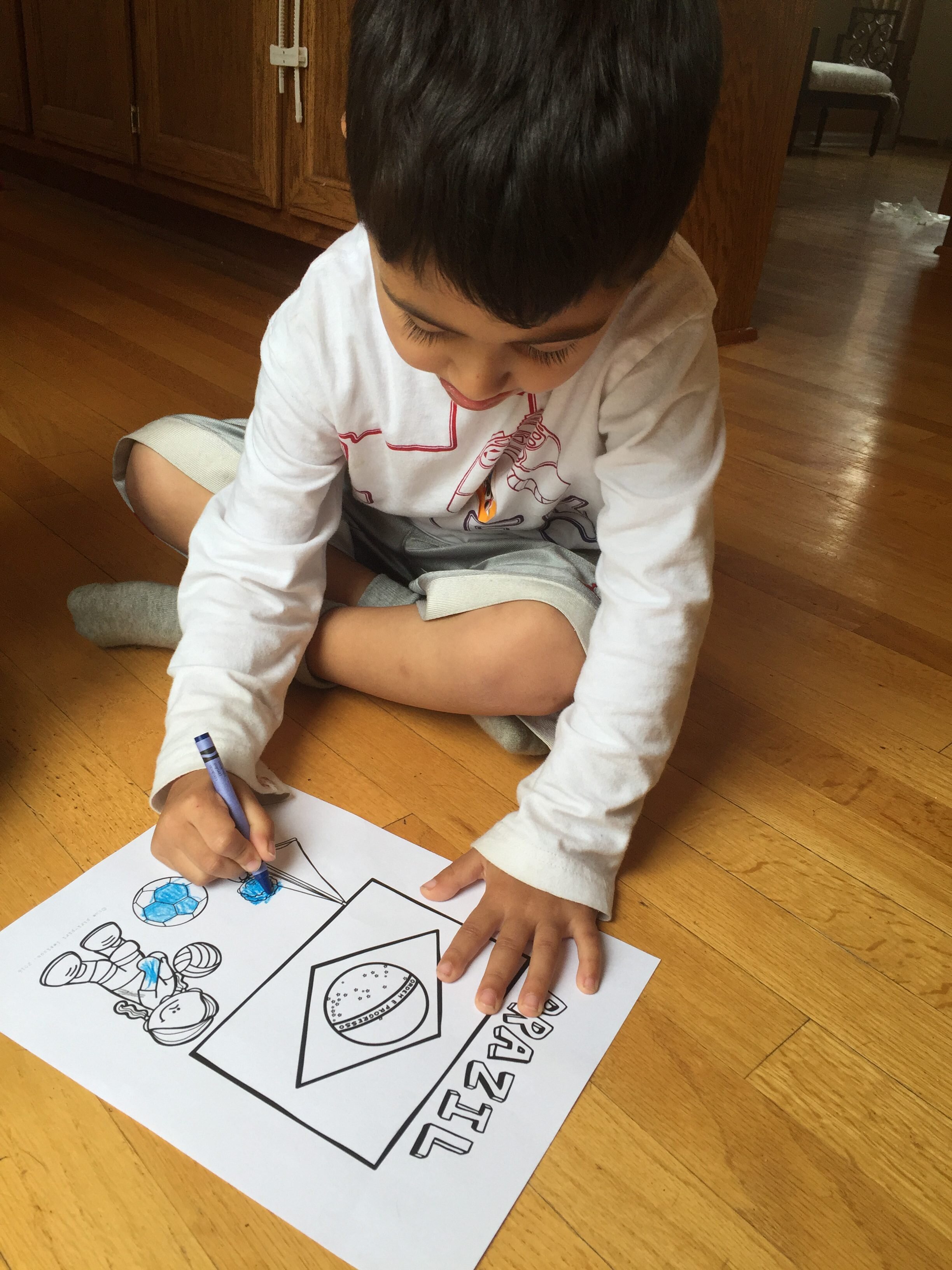
Public Schools
Meet With Your Child's Teacher
Scheduling a time to meet with your child's teacher provides an opportunity to help them get to know your family. This is the opportunity to let them know if your child speaks another language, cultures your blending at home, and answer any questions they may have. It's a good idea to be on the same page with your child's teacher. They might even incorporate different activities or have fun ideas on how to bring in your child's culture to the classroom.
Propose A Multicultural Event
Integrate your child's culture into their classroom by volunteering to help through a special event or teach them about a tradition practiced in your home. Teachers love parent volunteers! Tell them a few ideas you have on how to teach the class about a different culture.
Dual Immersion Schools
Make Sure You Value Both Languages
Your children need to know their family values both languages they're learning. Be careful not to make one seem more important. This will encourage them to figure out why they value the languages they're learning. They need to value what they're learning to be willing to put in the hard work.
Don't Make Your Child Show Off Constantly
What is your first thought when you see how much your child is learning? You want to show them off to all your friends and family! Look what she can say! Don't turn your kids into a parrot. It can embarrass them and make them less willing to learn a new language.
Be Aware Of The Challenges
Being fully immersed into a new language can hard. Your kids may deal with struggles, but it's ok. It's a normal part of the process. If you're worried, ask for a meeting with your teacher. They can let you know how your child is doing and what you can do to encourage and help them through the challenges.
-----------------------------------------------------------------------------------
Whether you're homeschooling, putting your kids in public school, or doing a dual immersion program remember you can always put a multicultural spin on their education. You are raising a global citizen. This means it's your responsibility to excited them about other cultures and blend your culture into daily lives.
